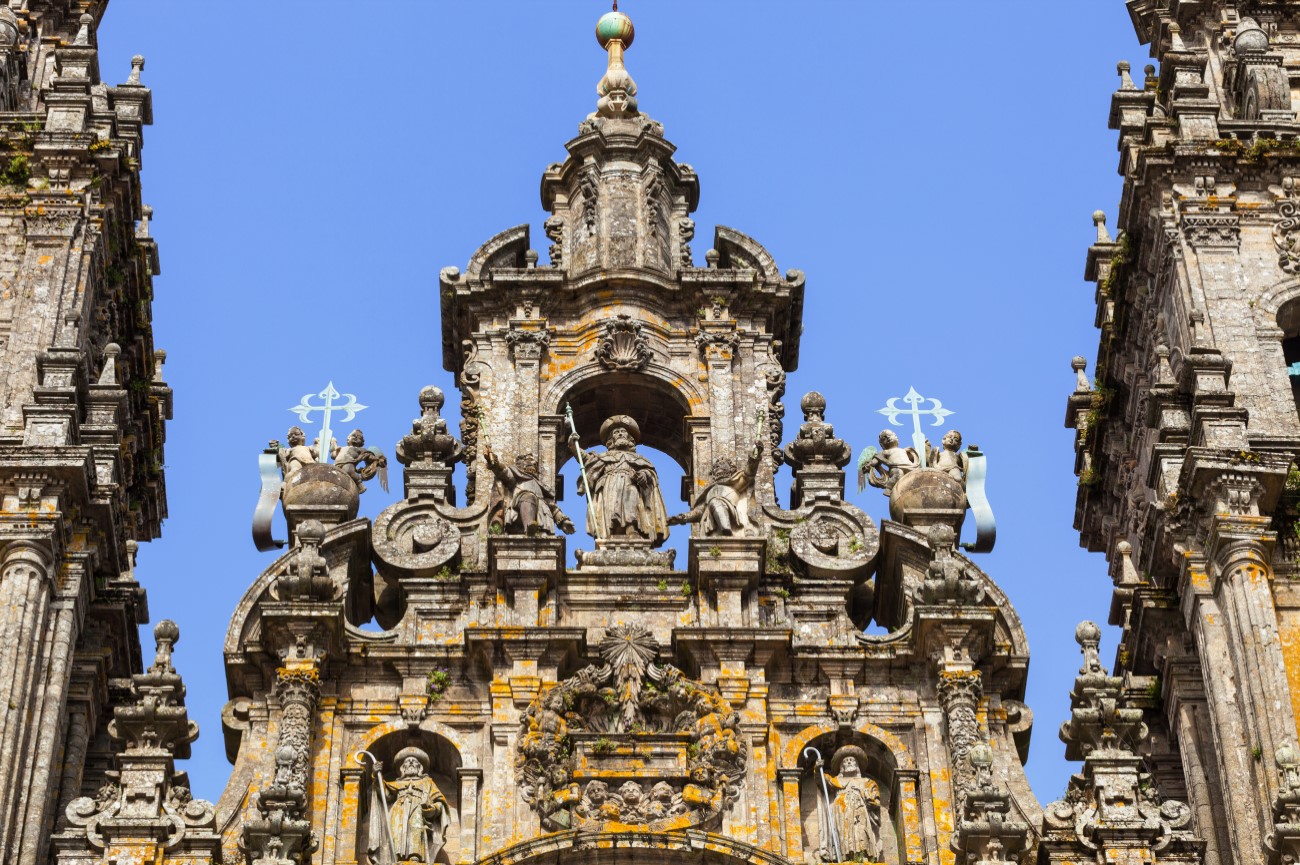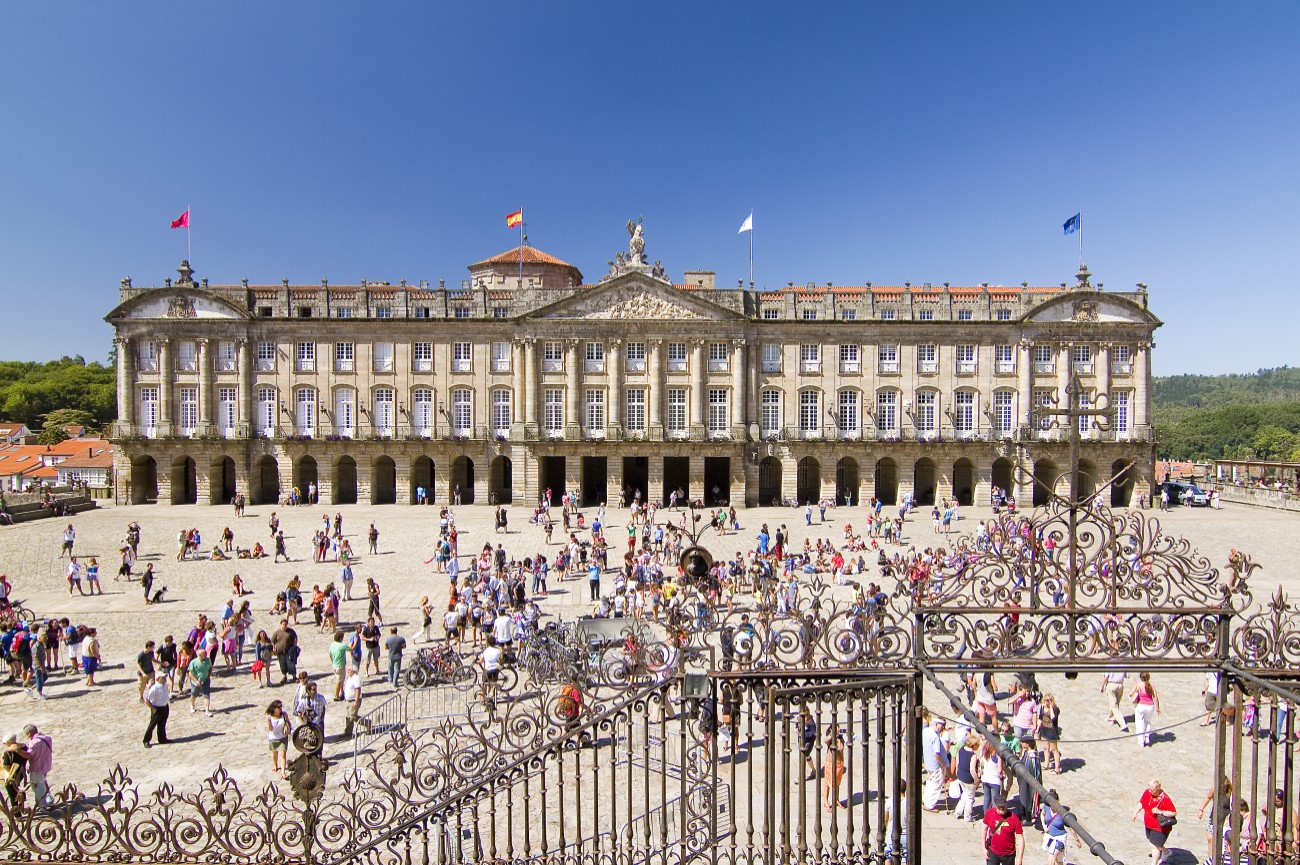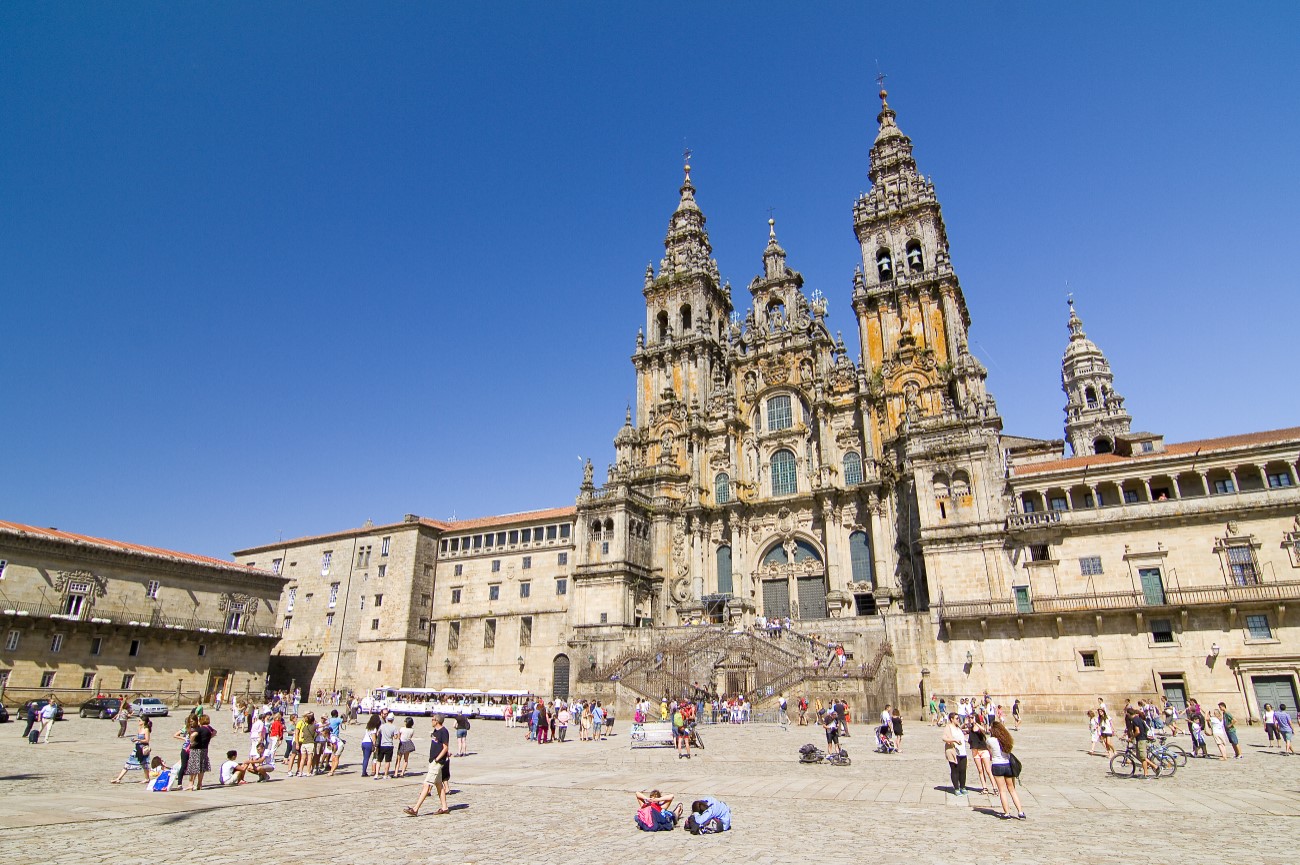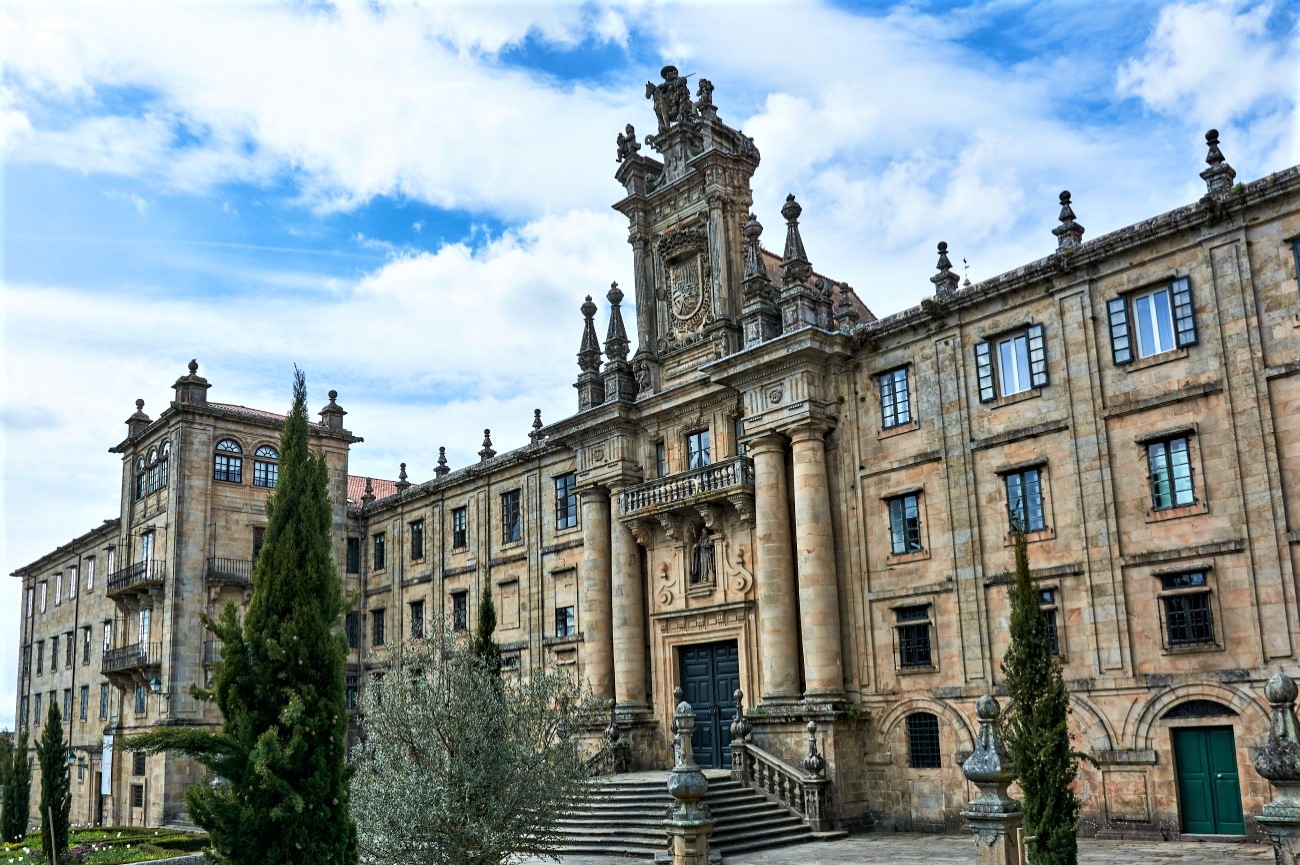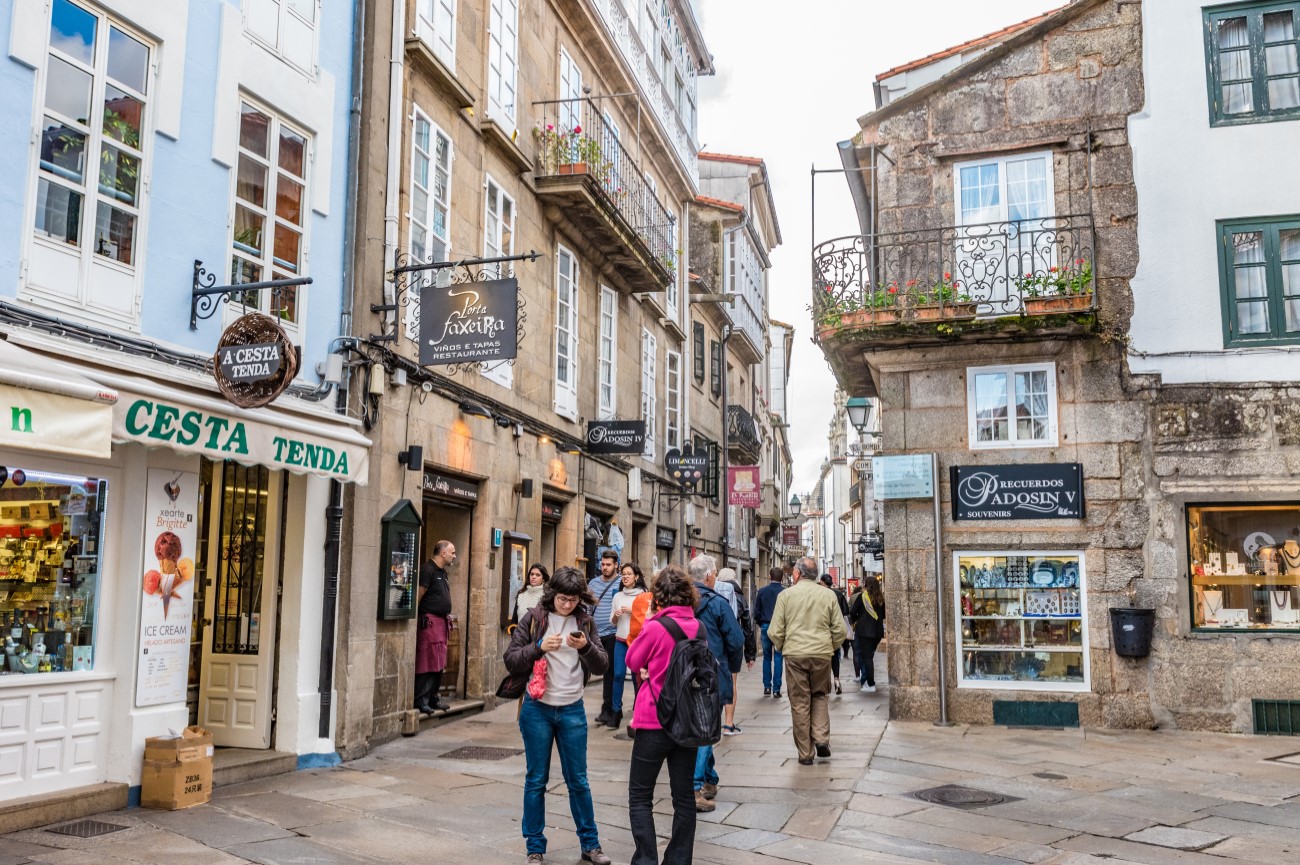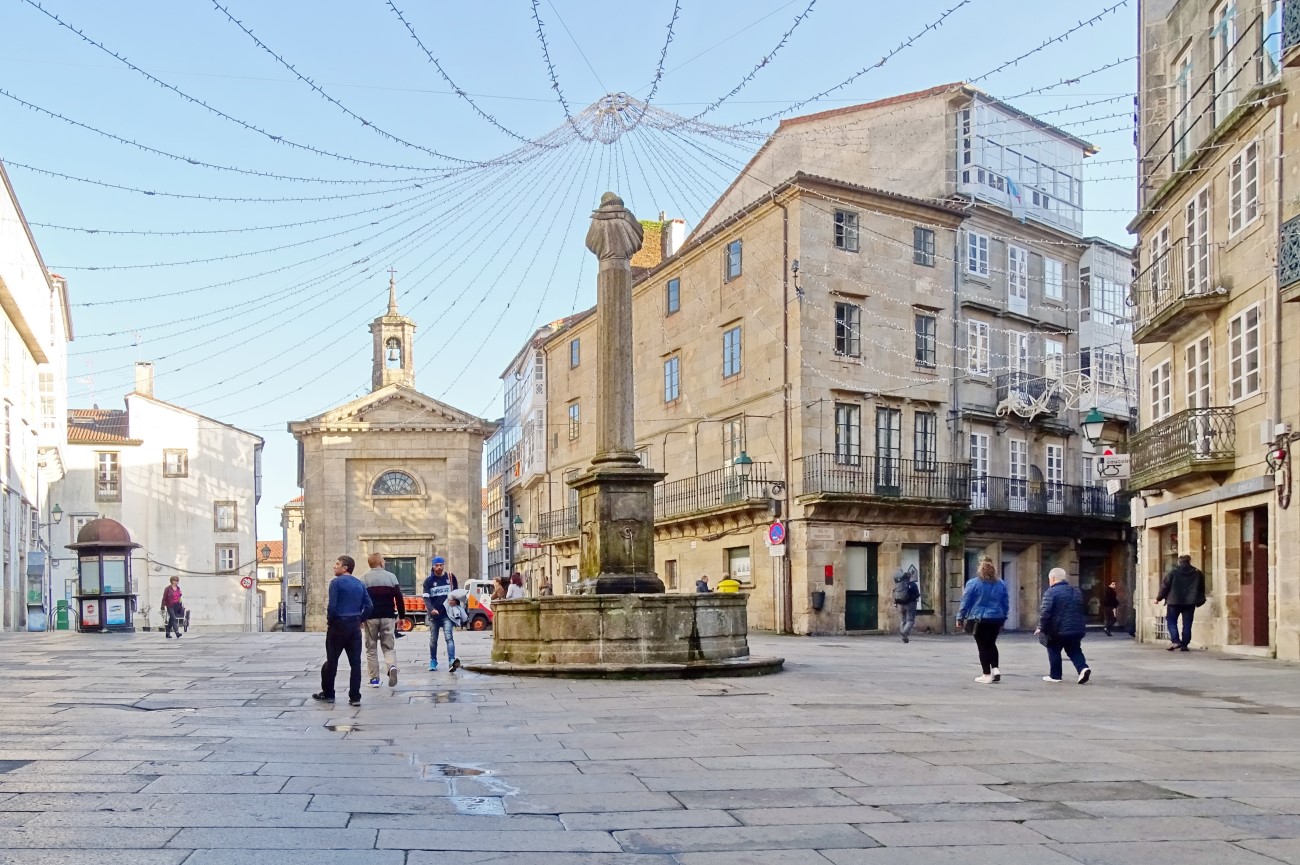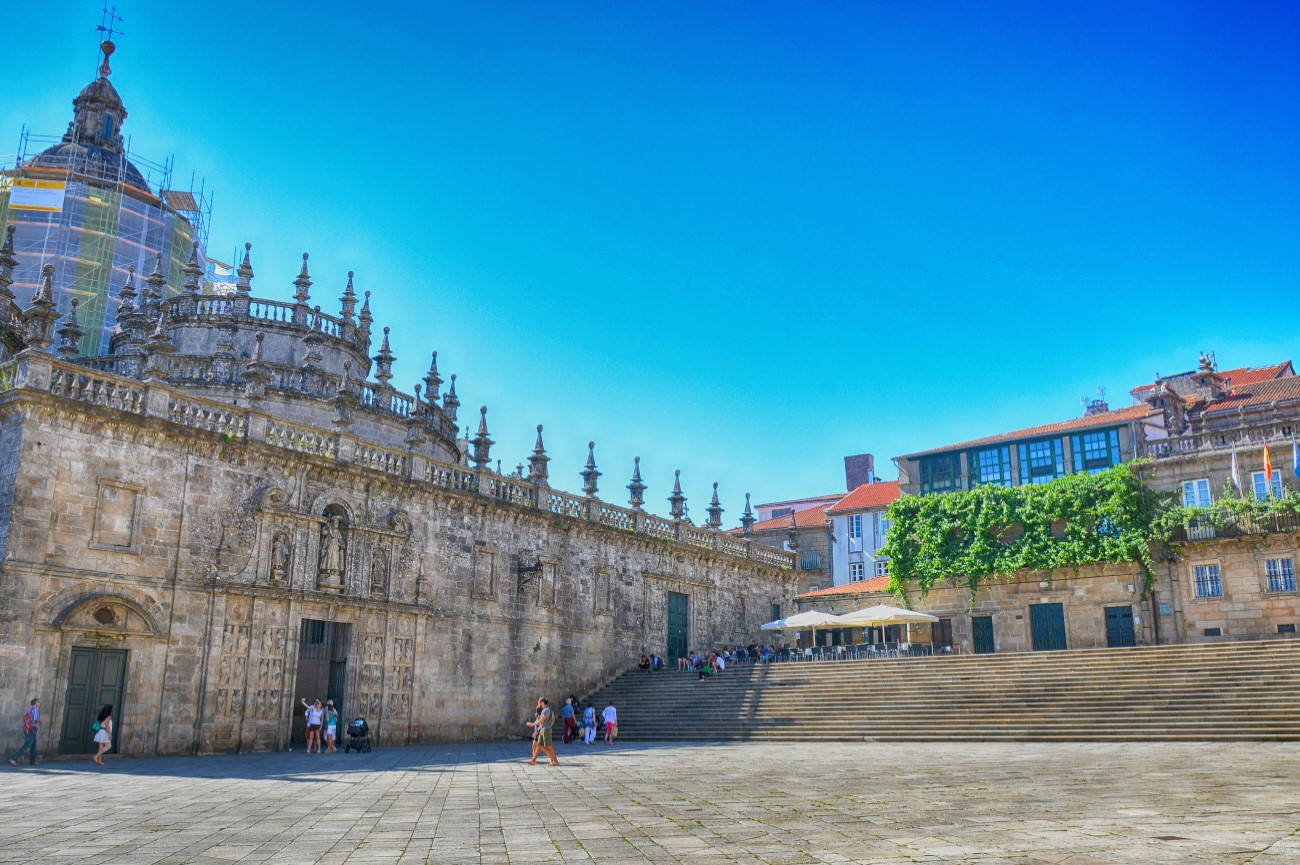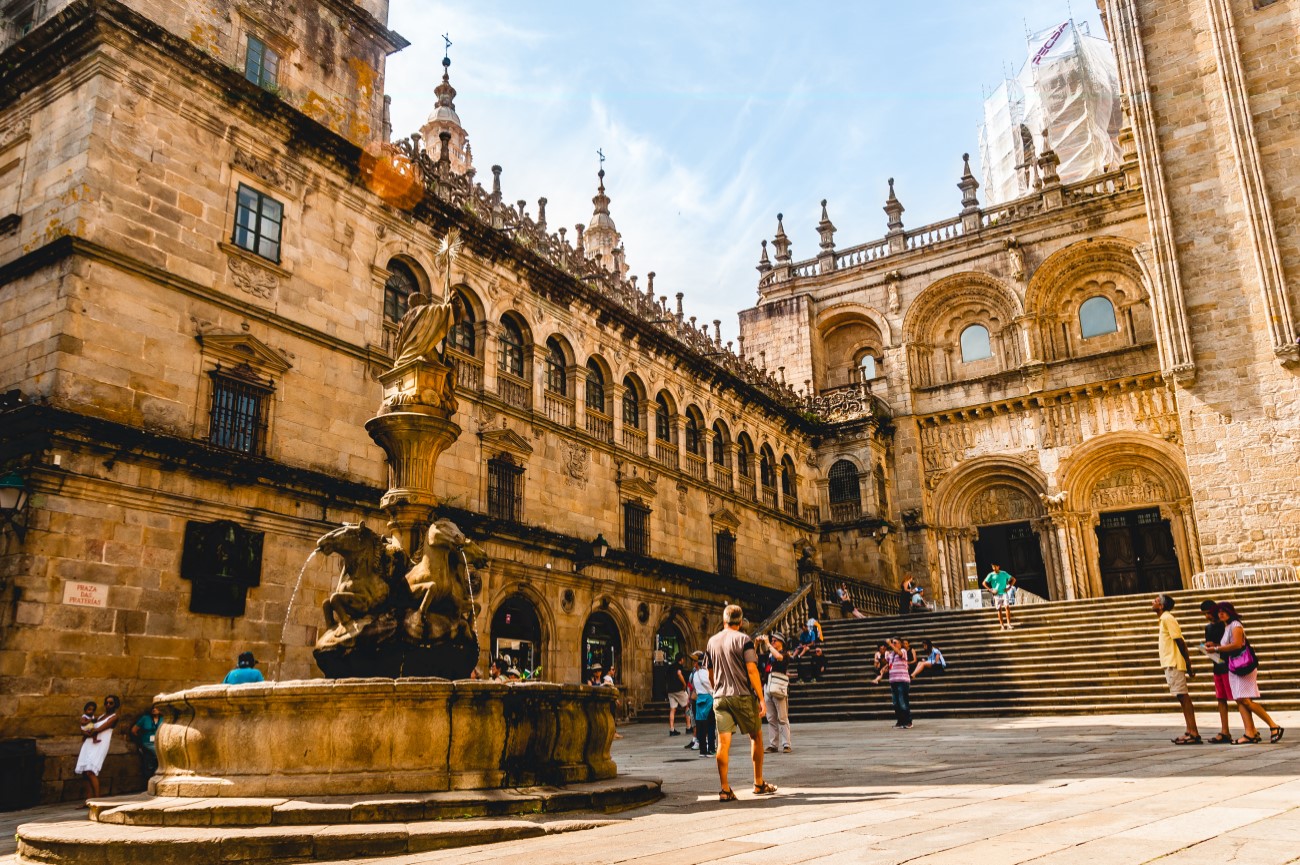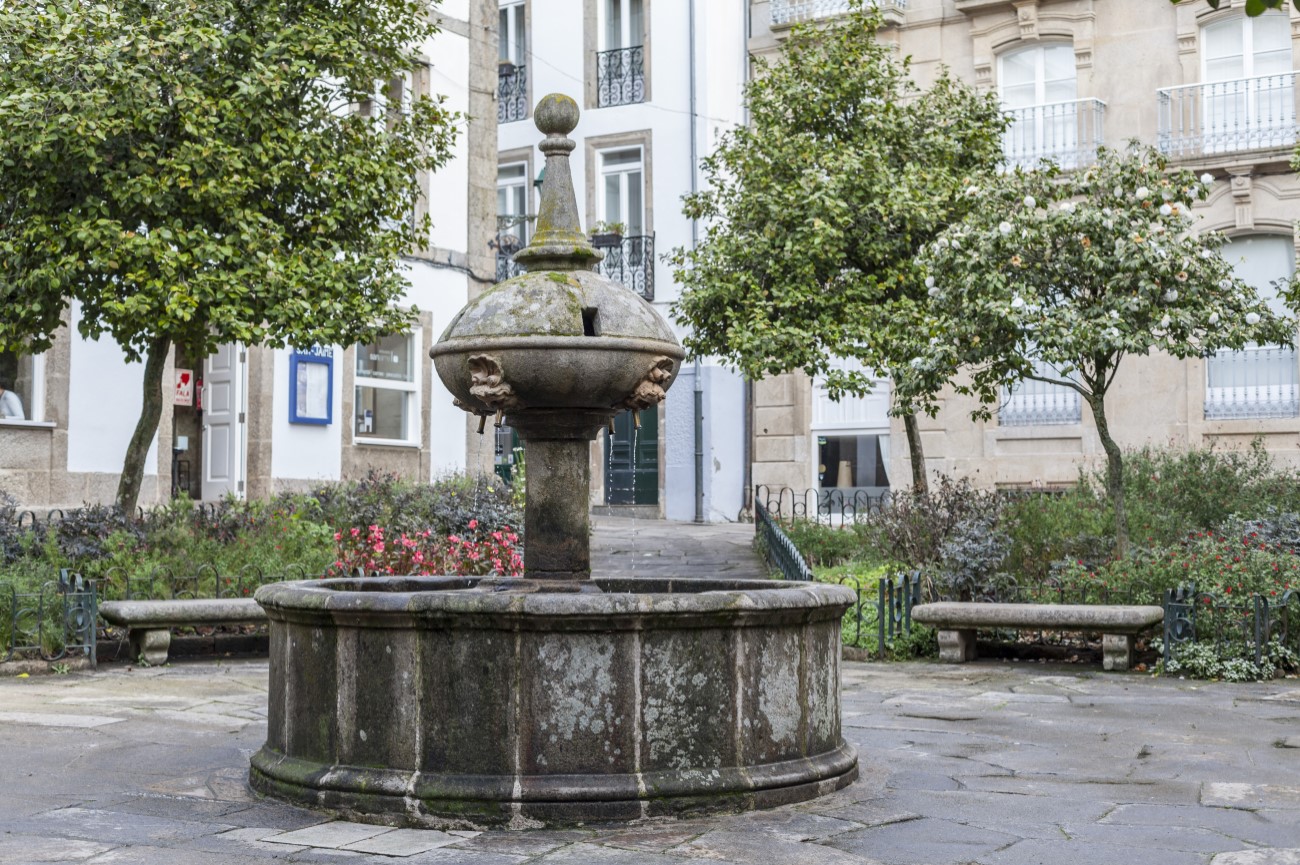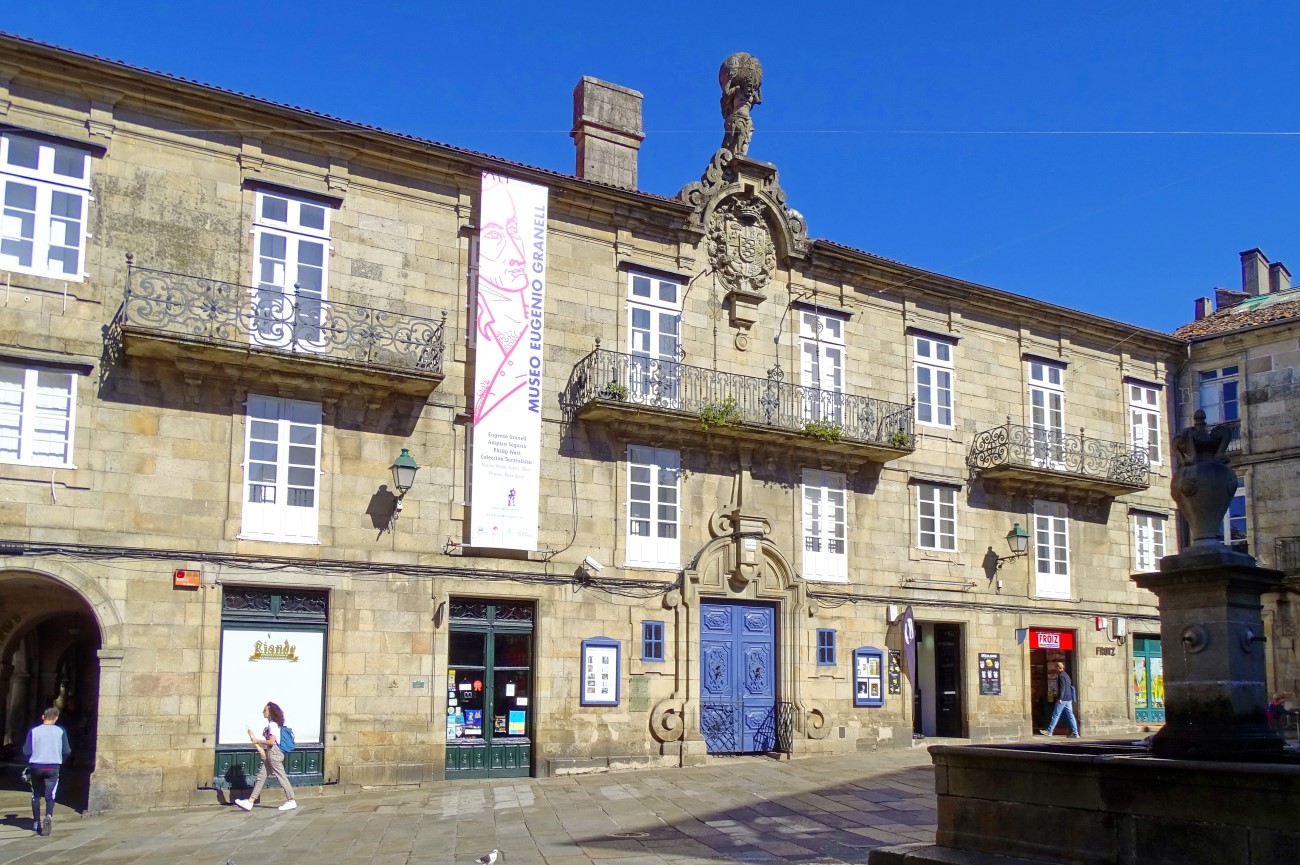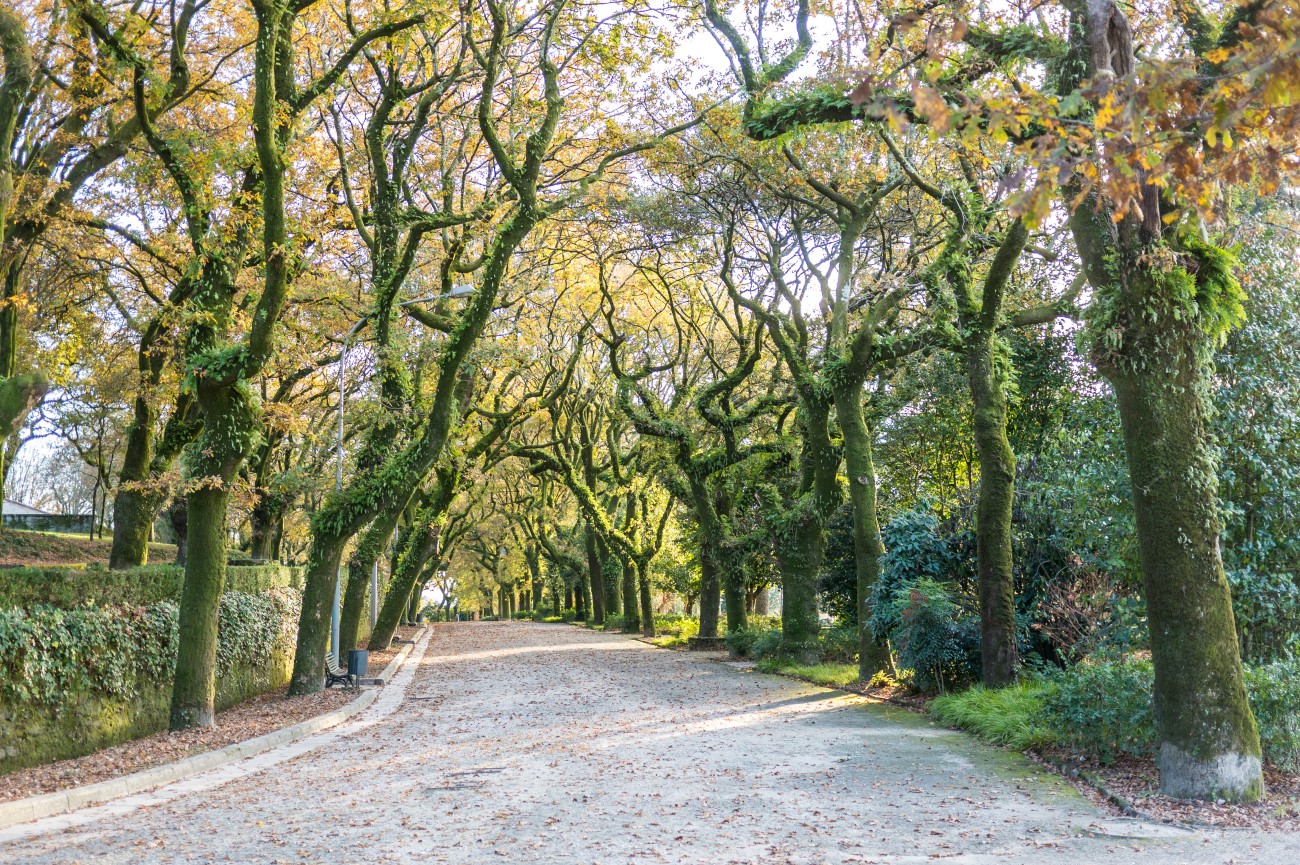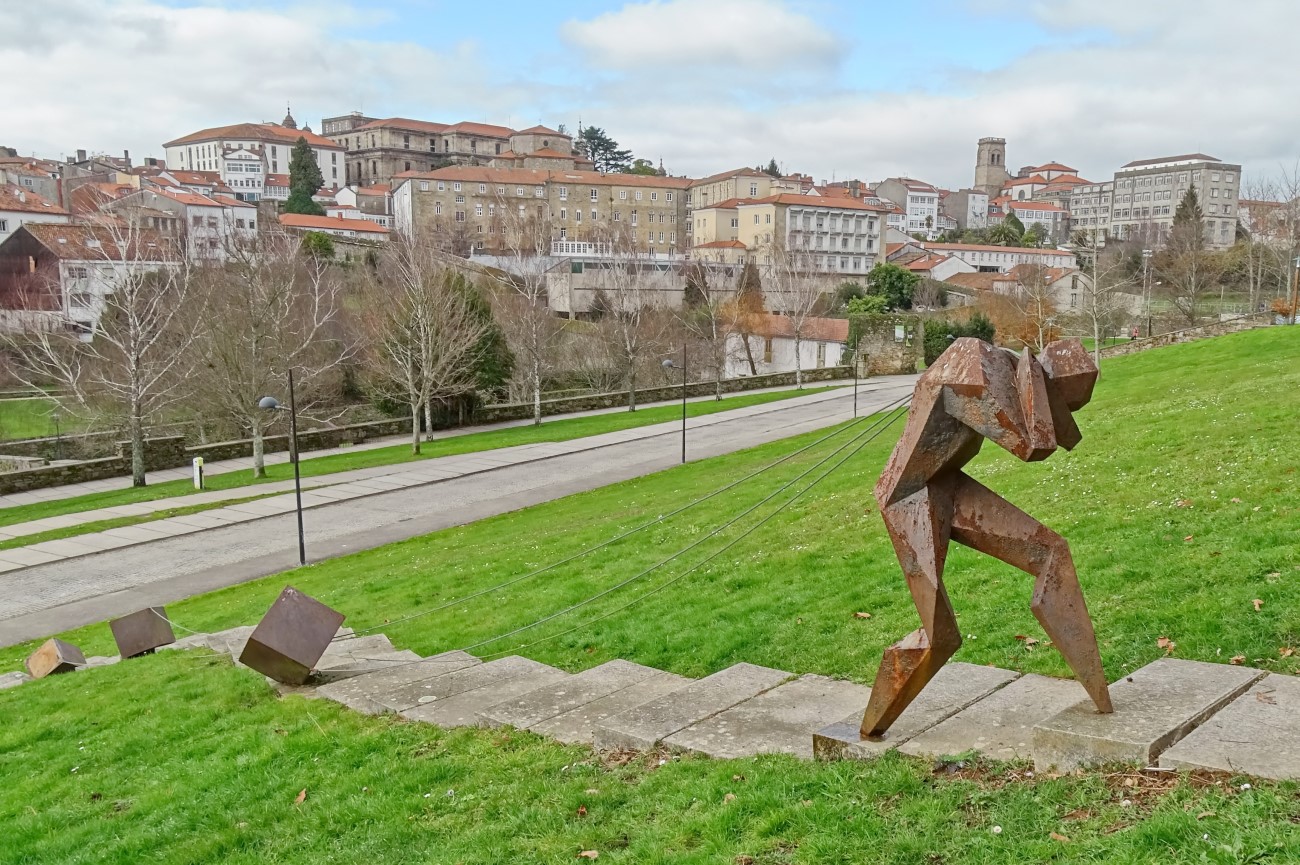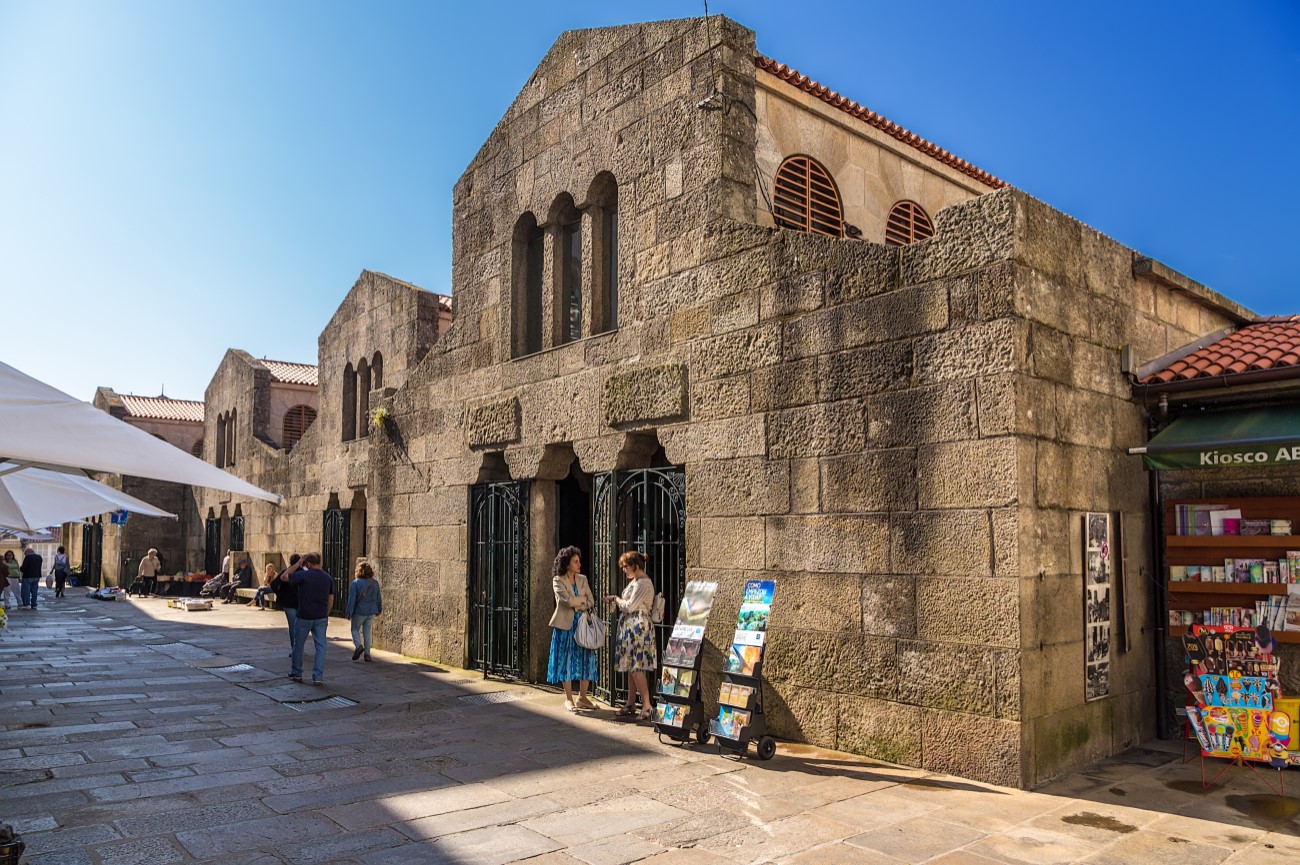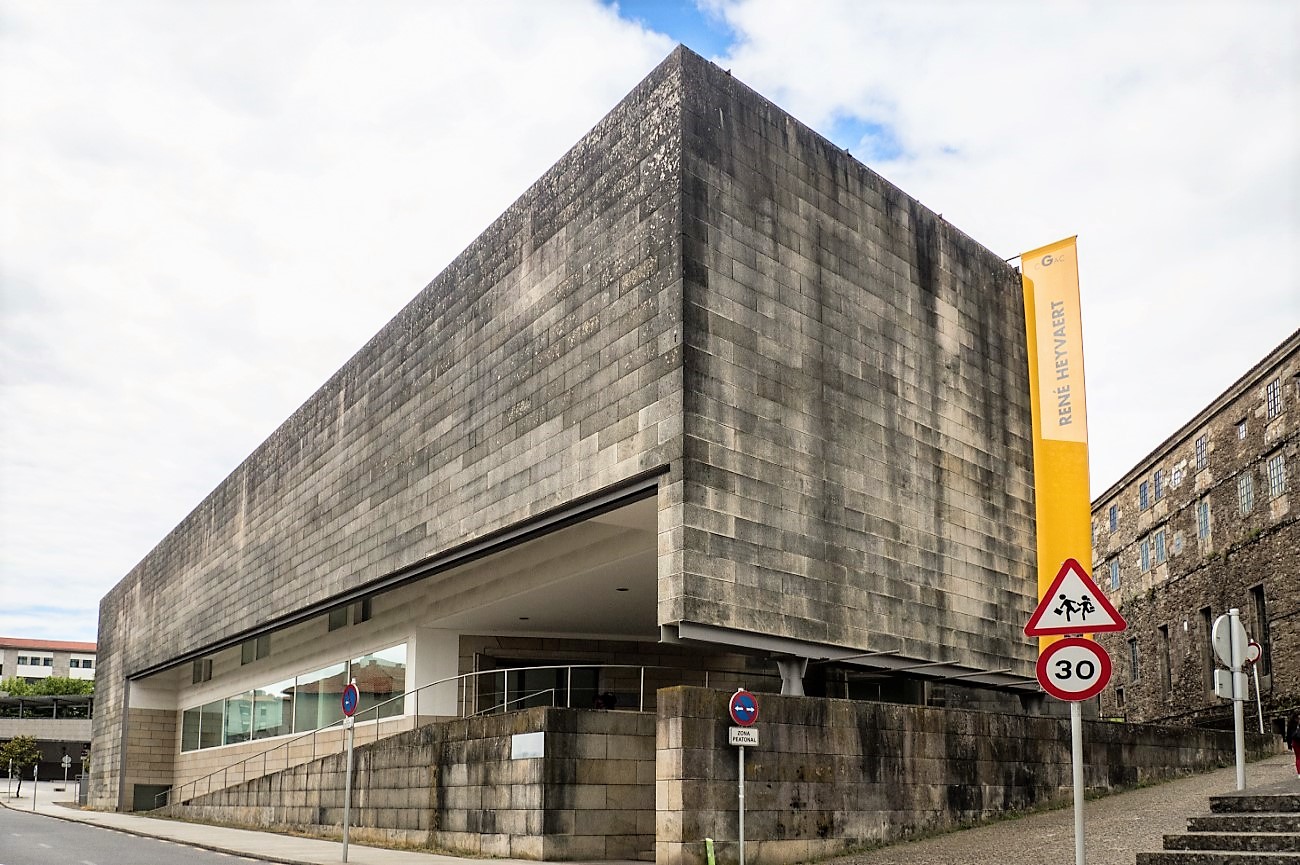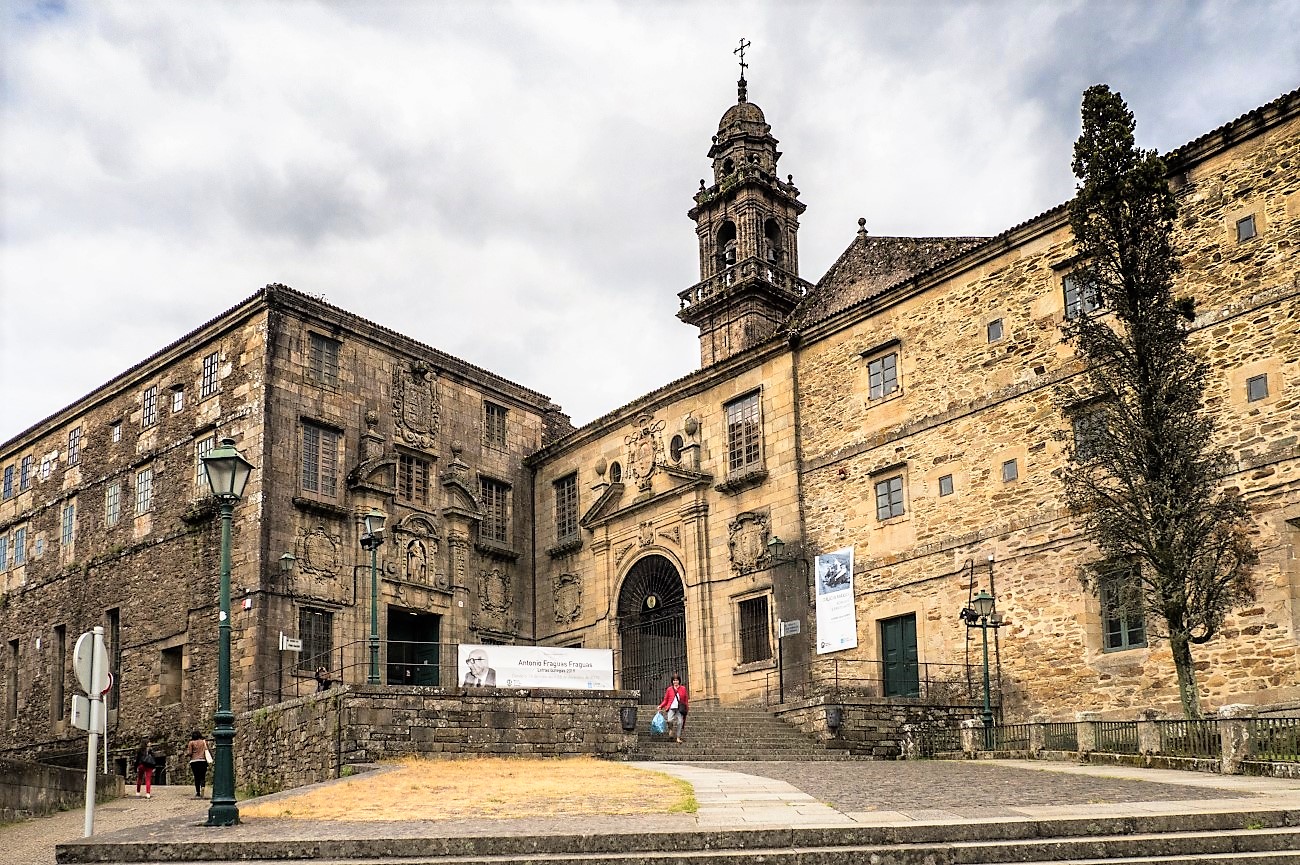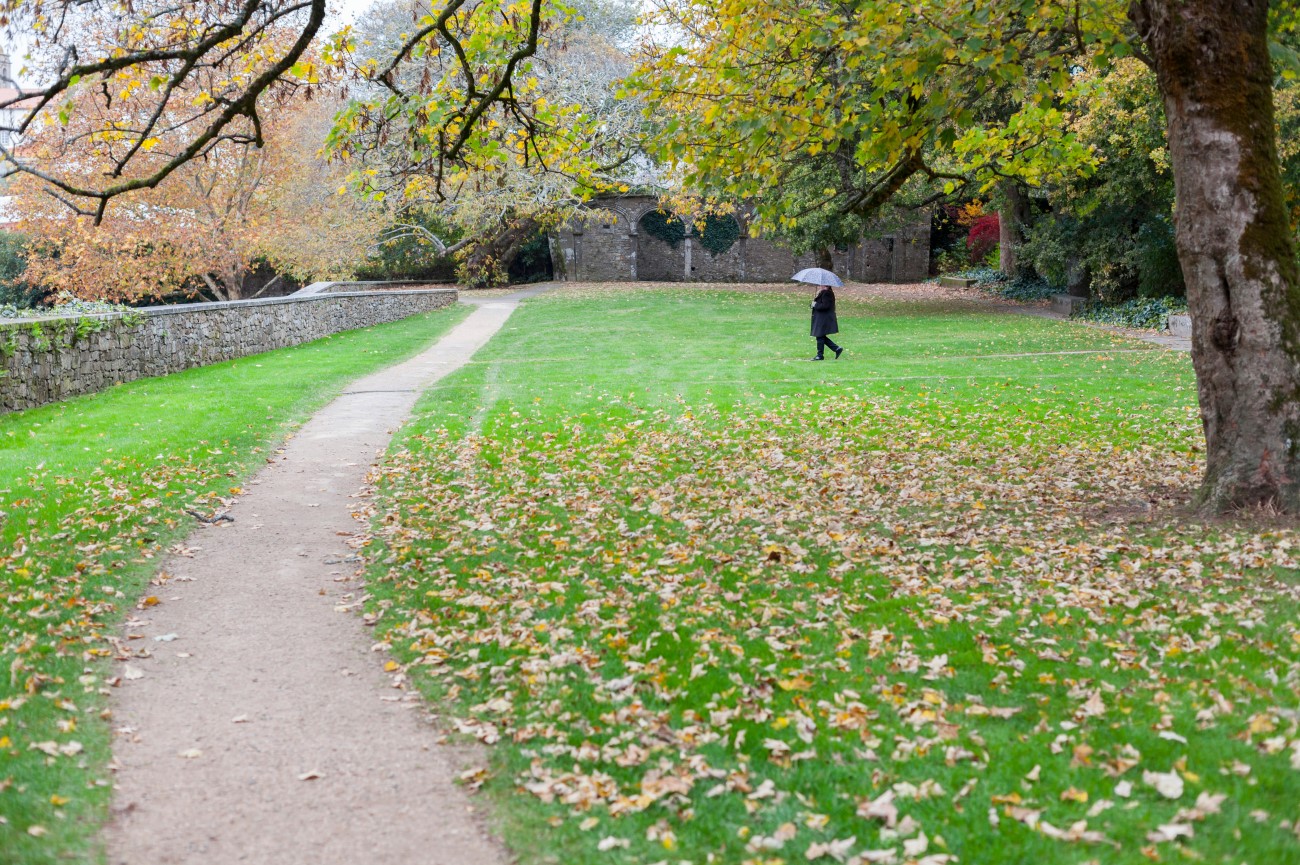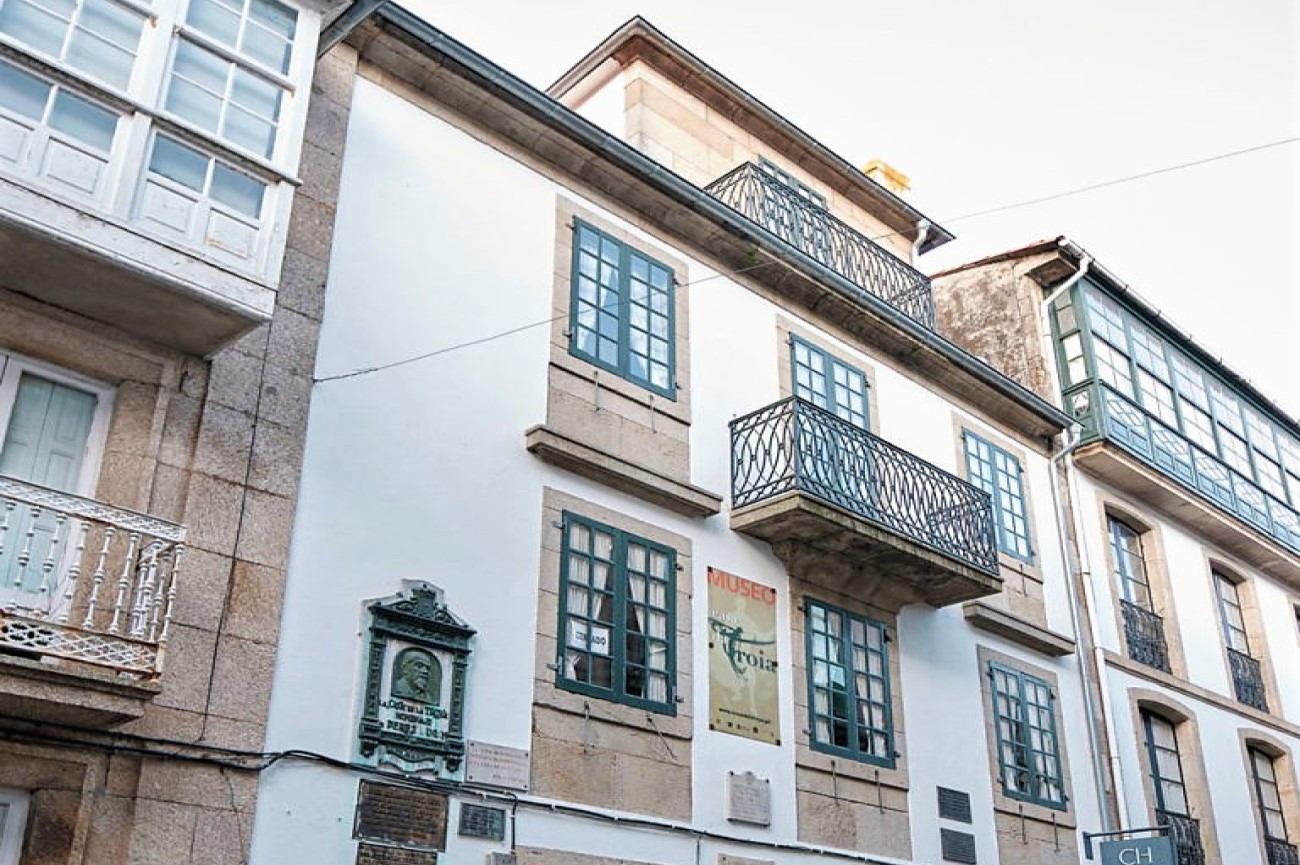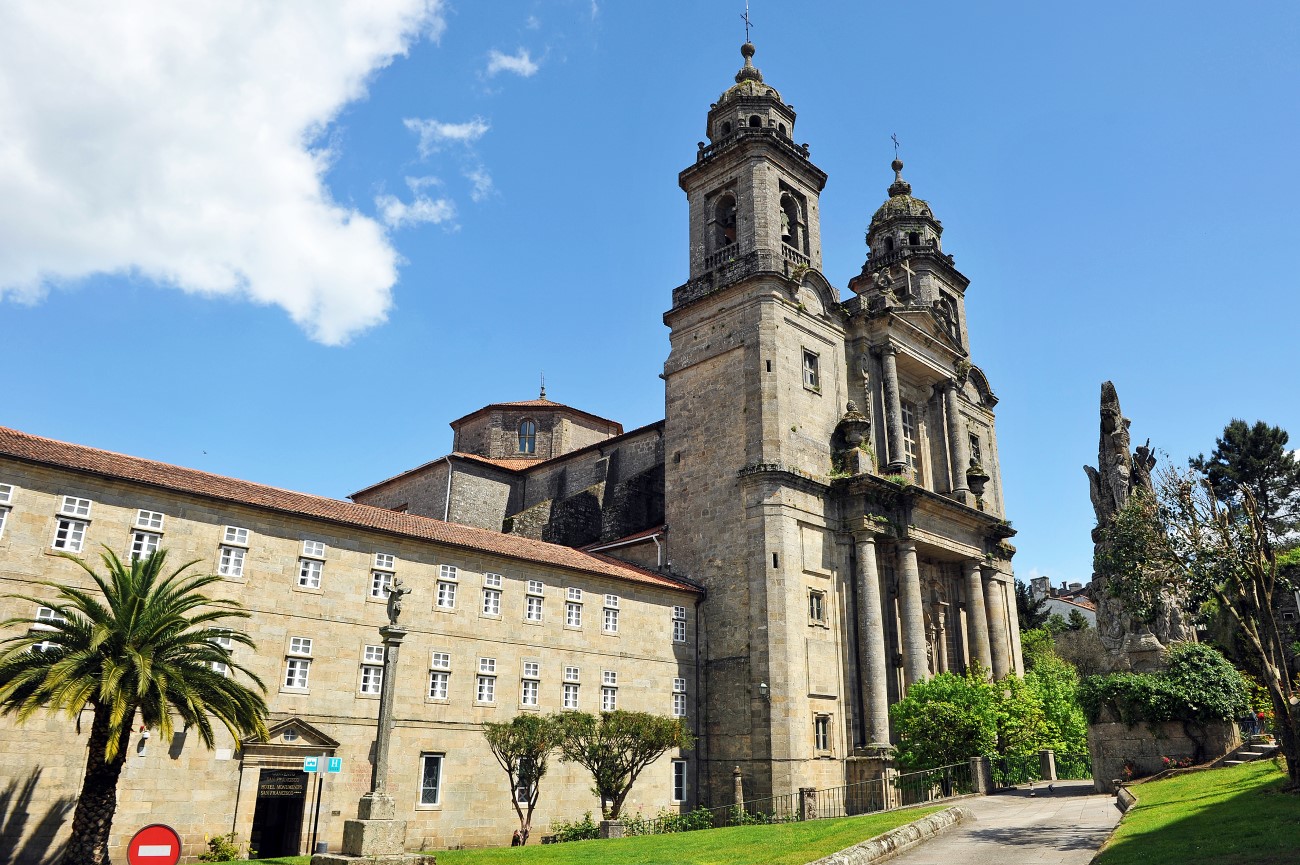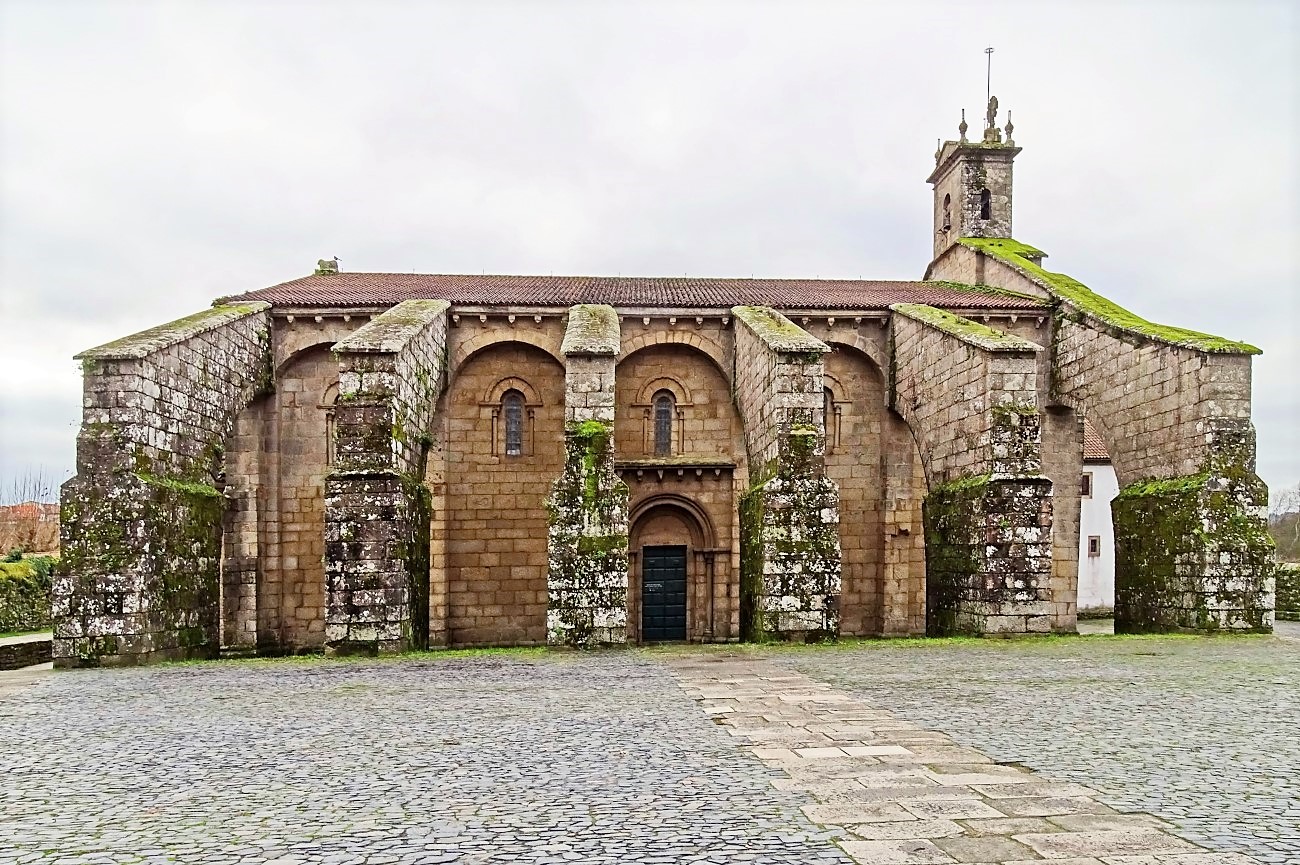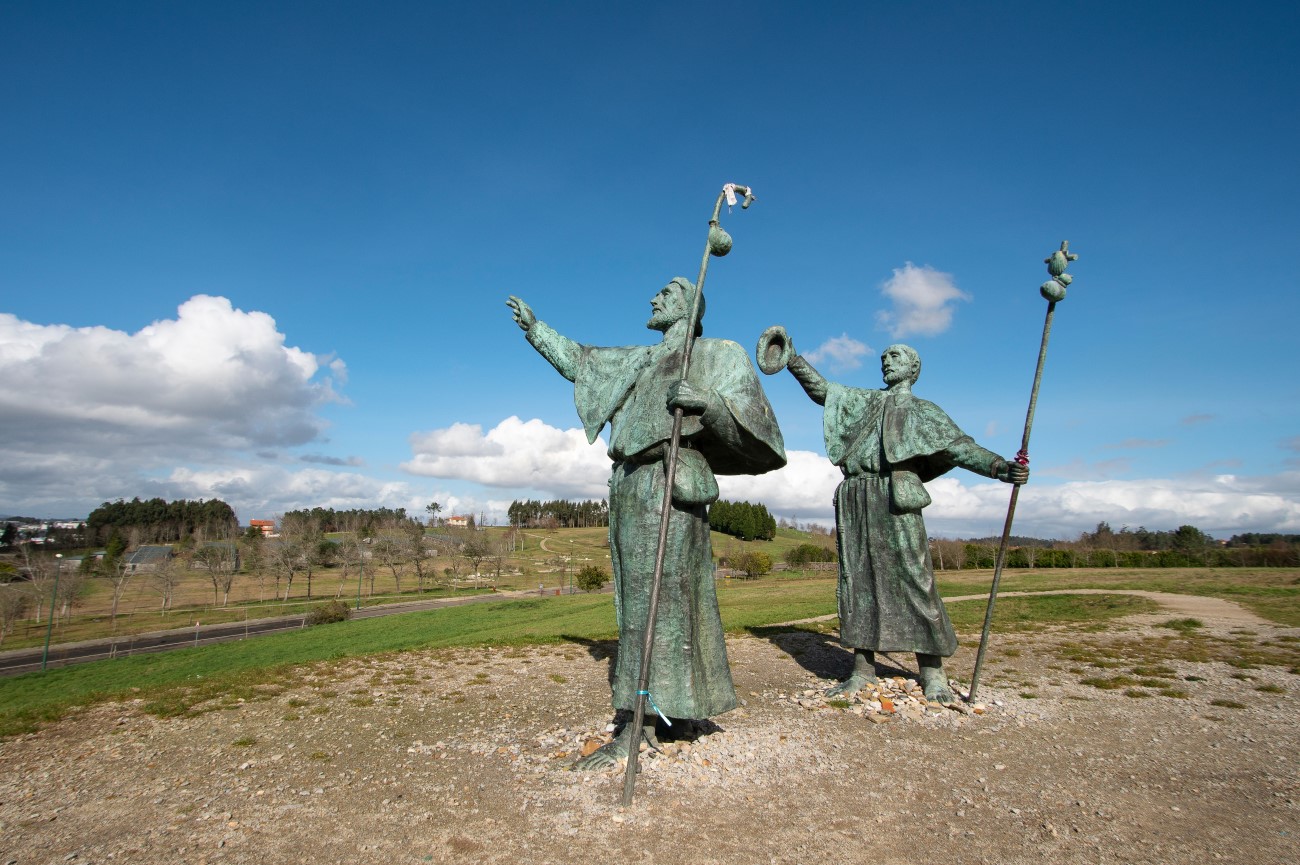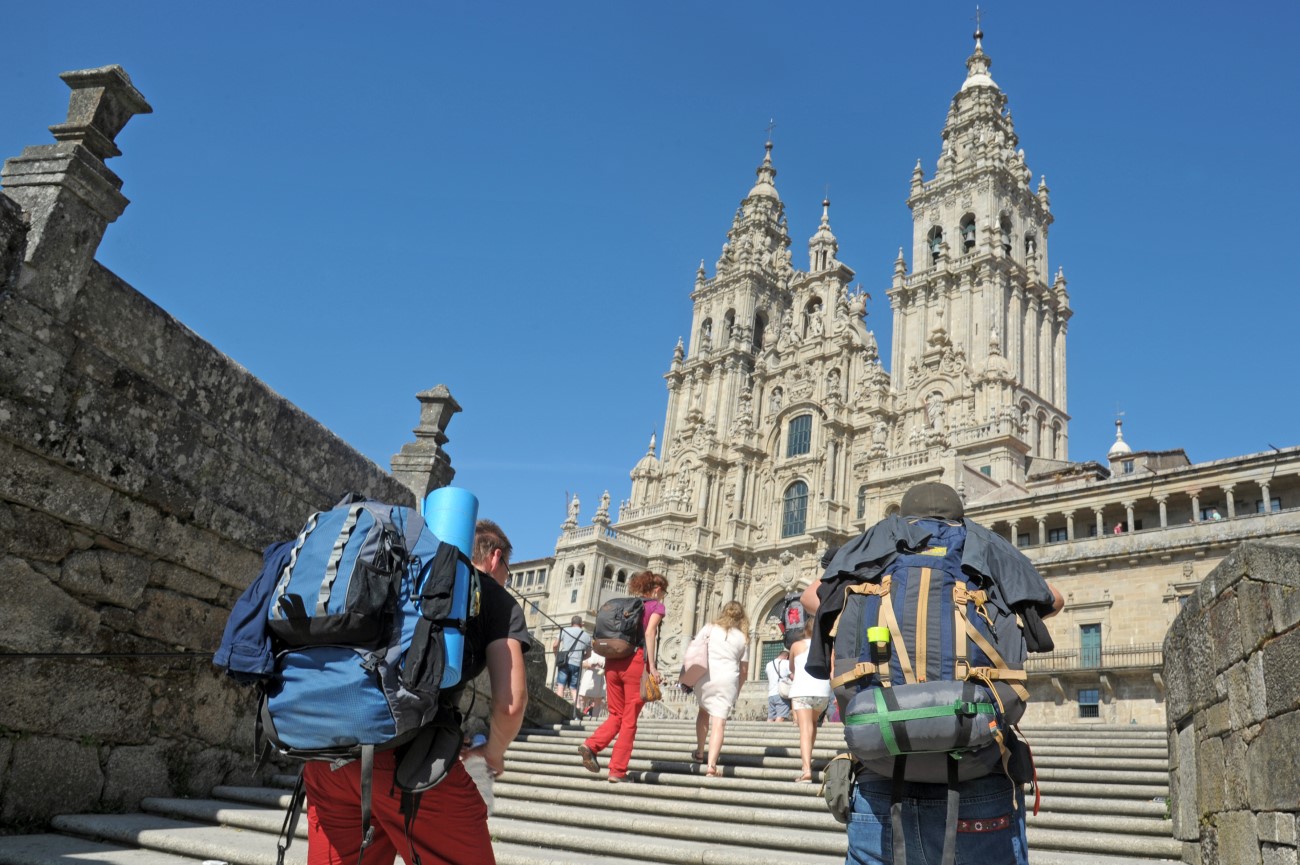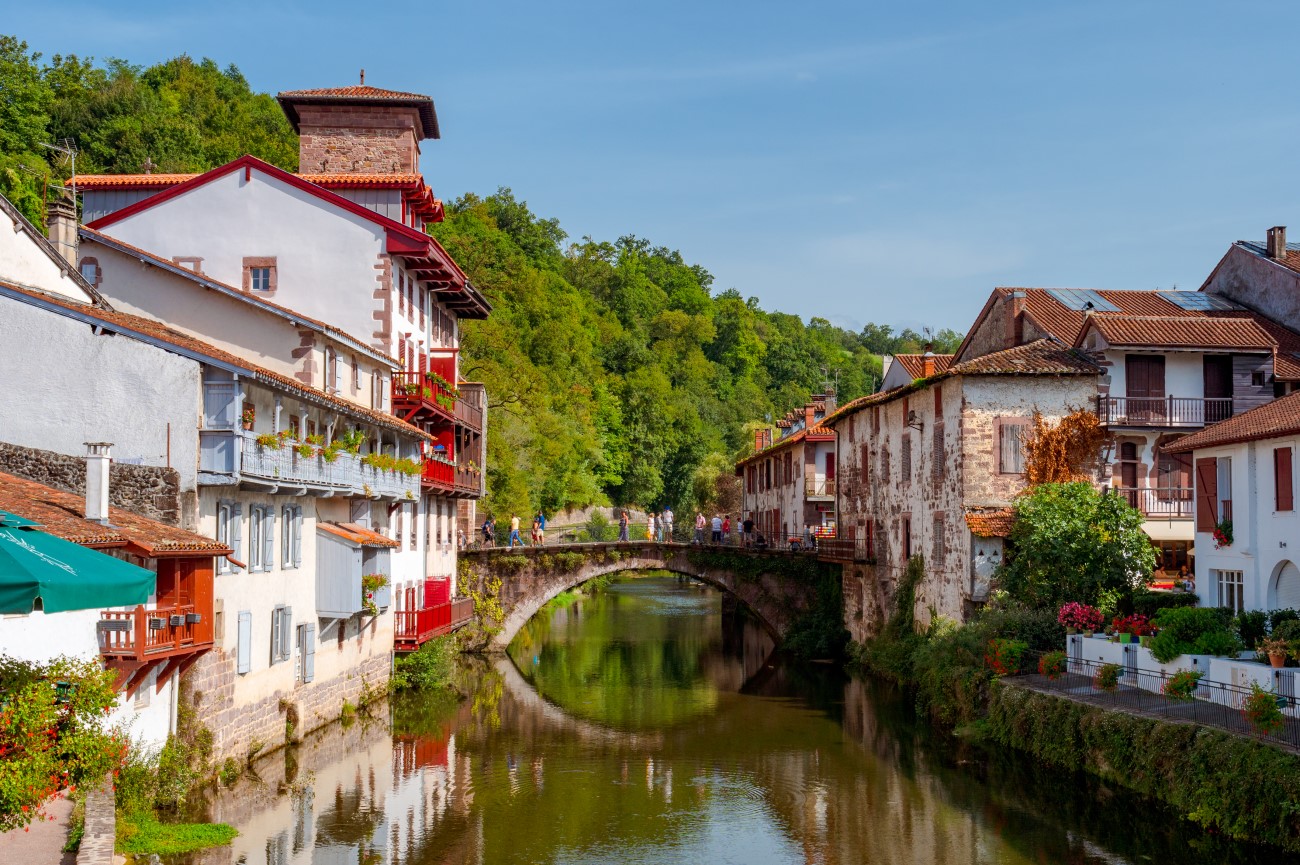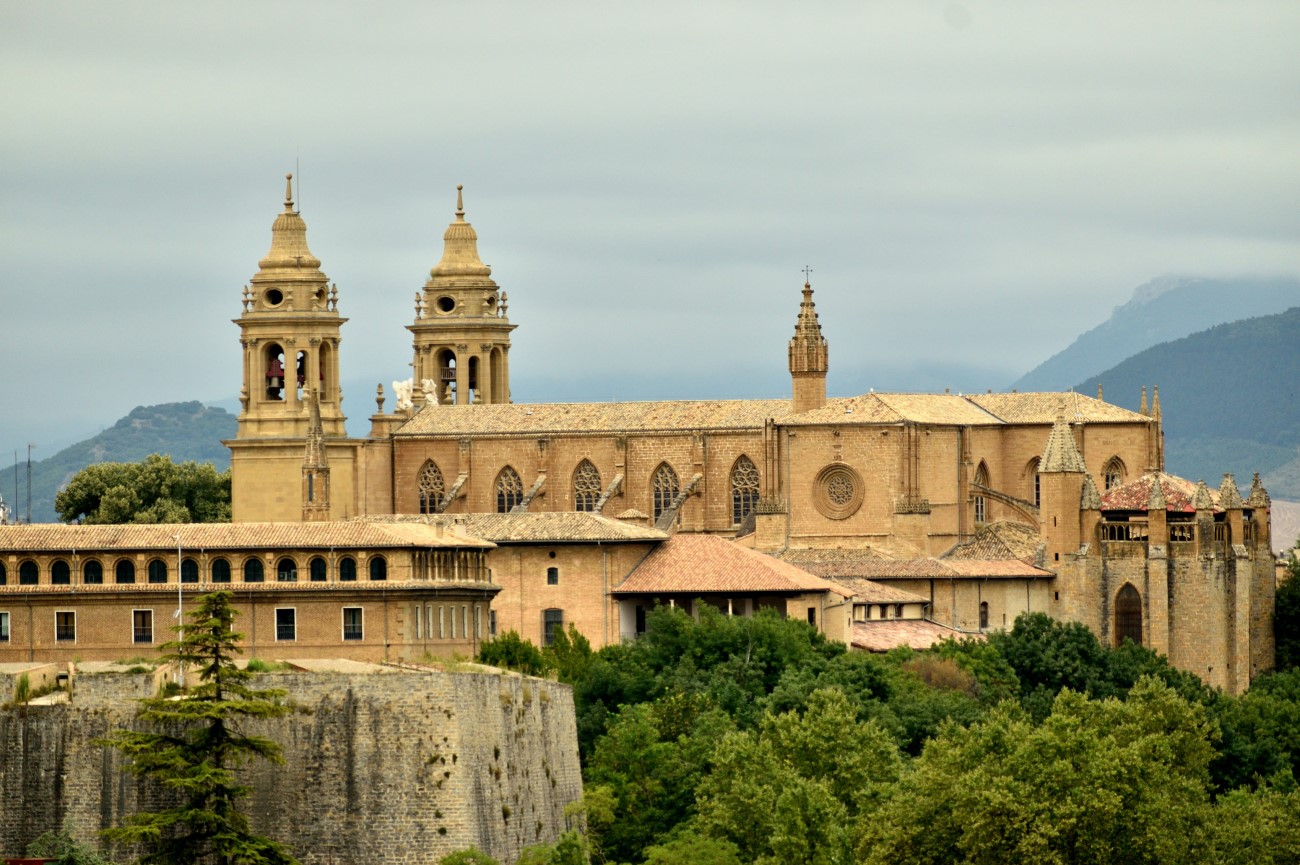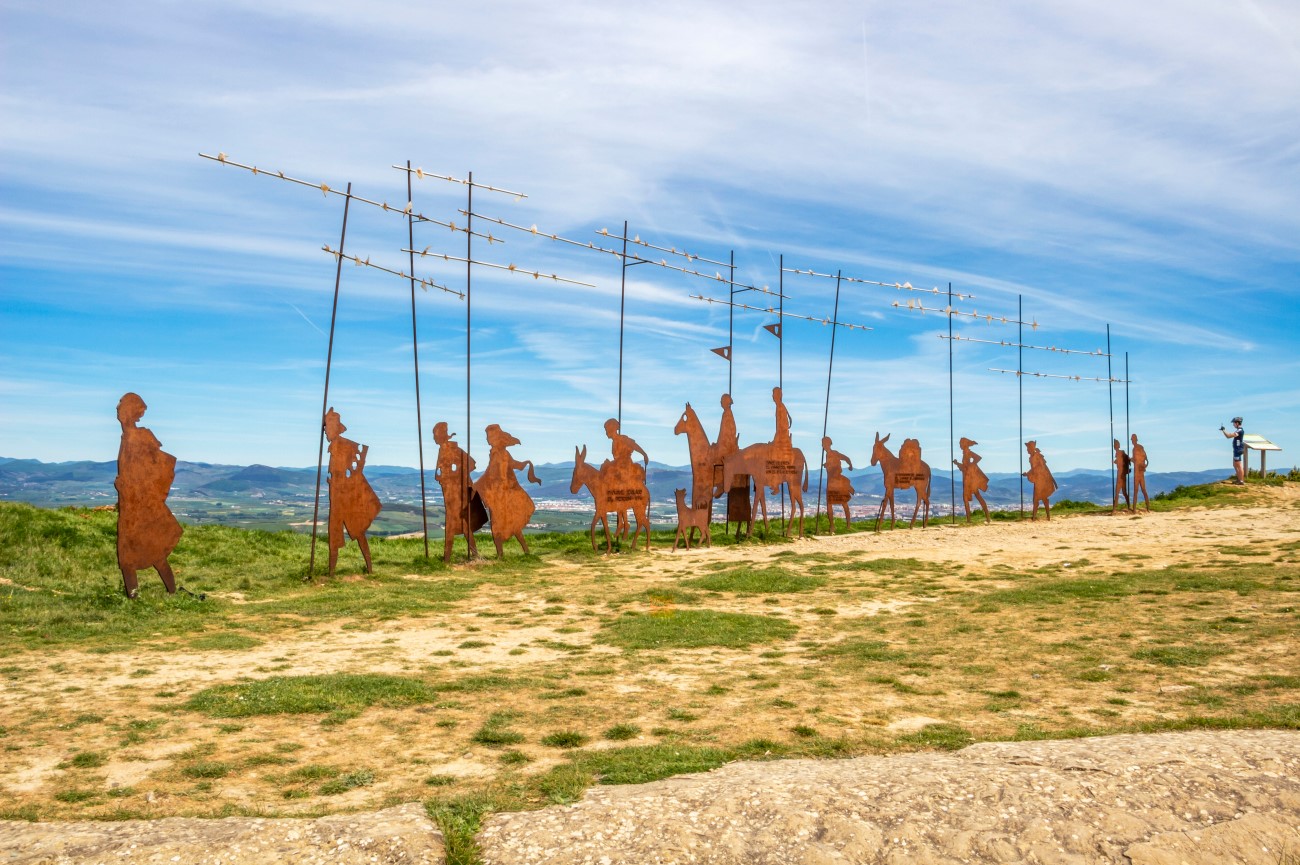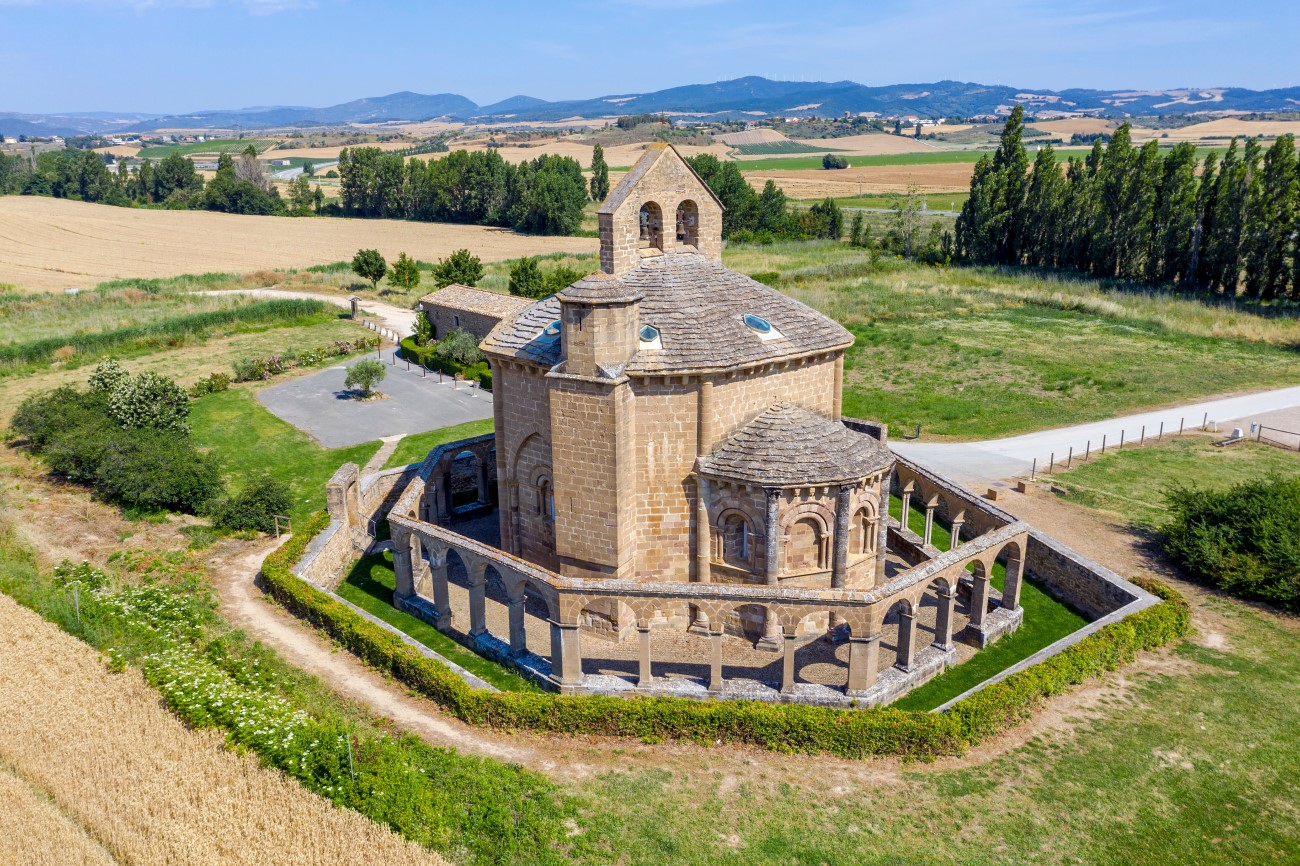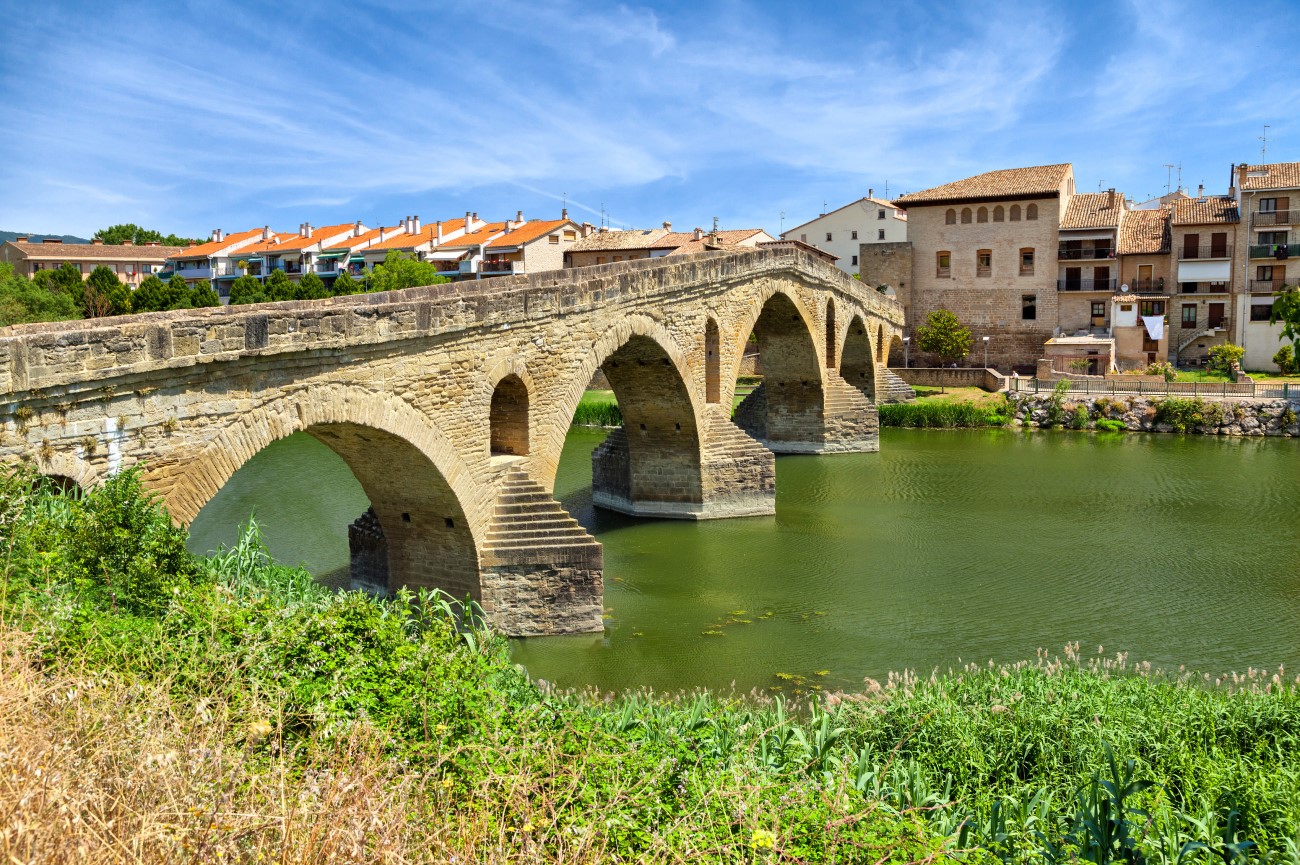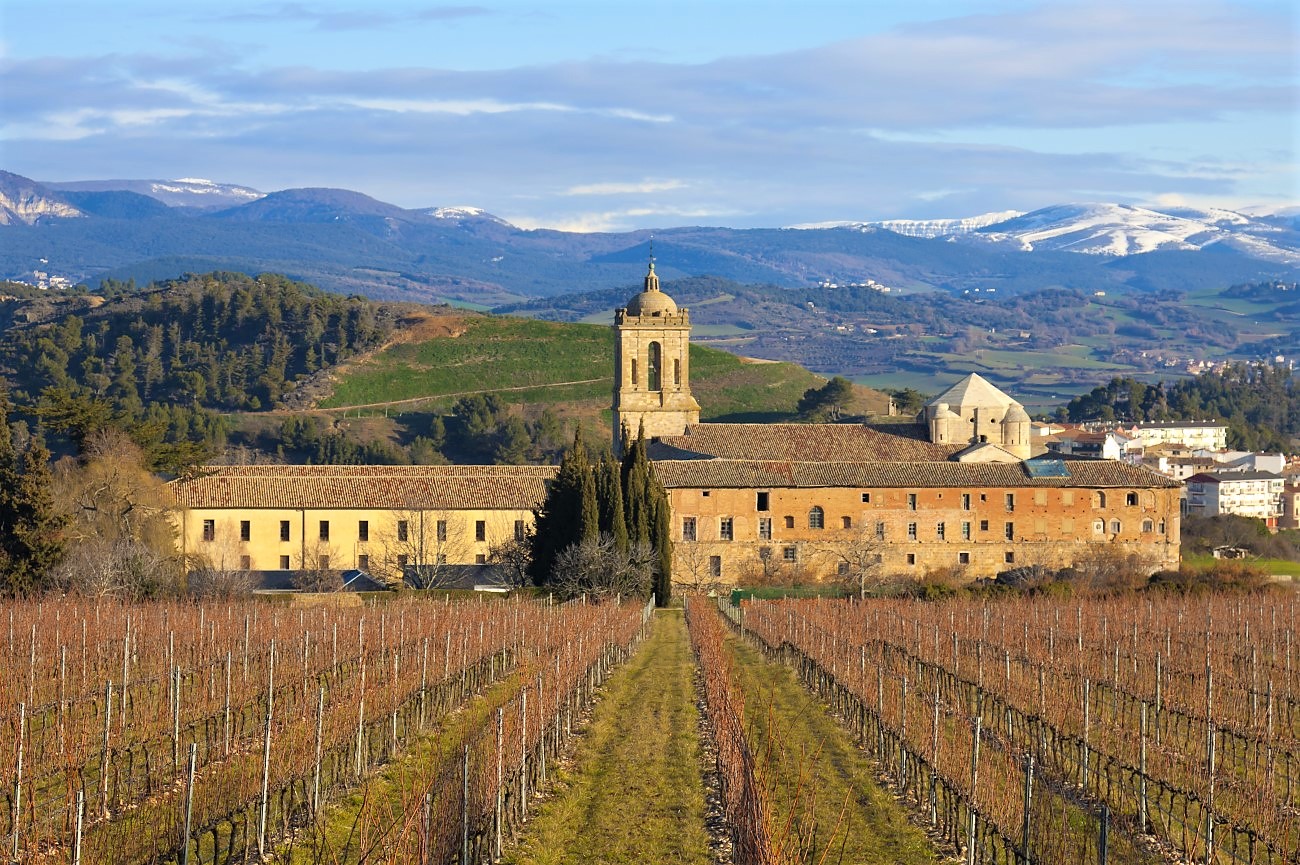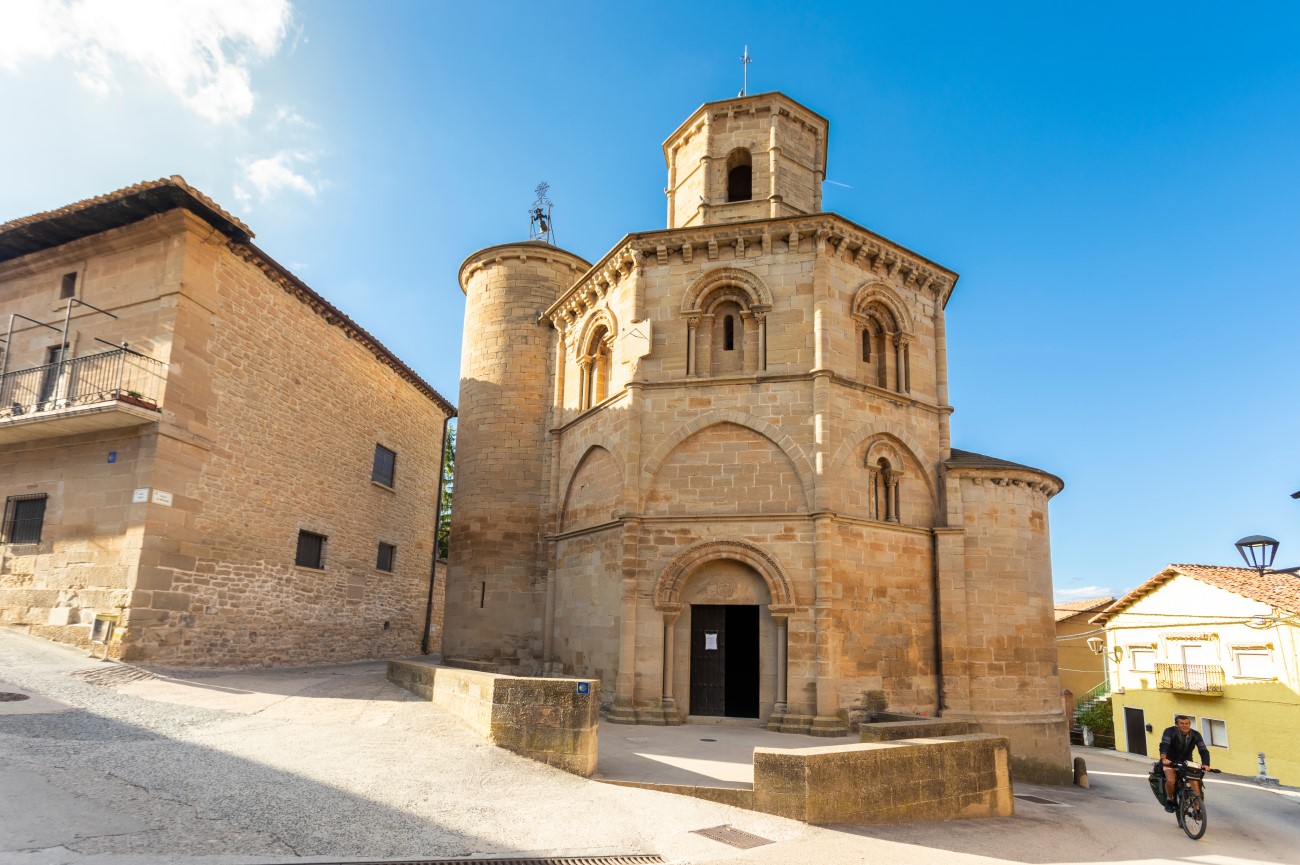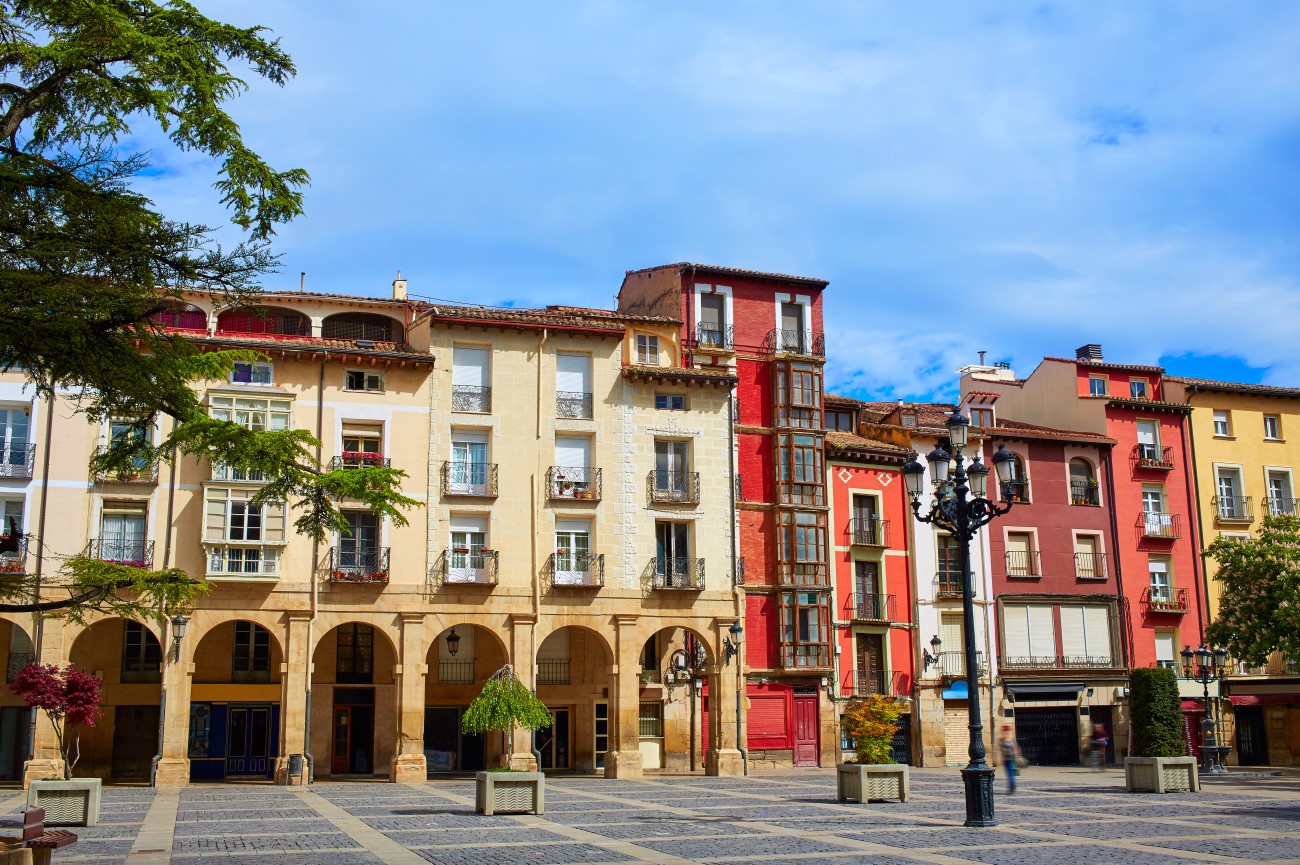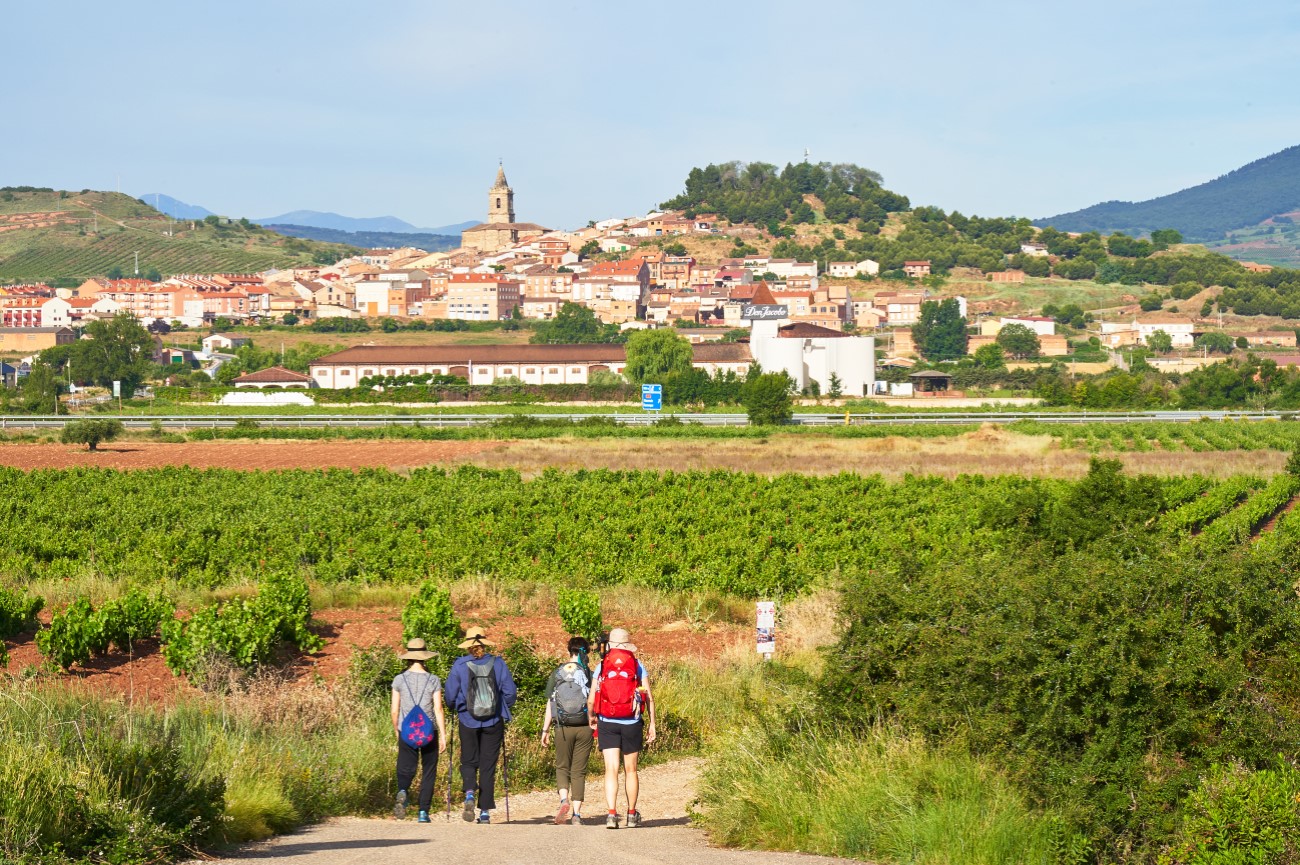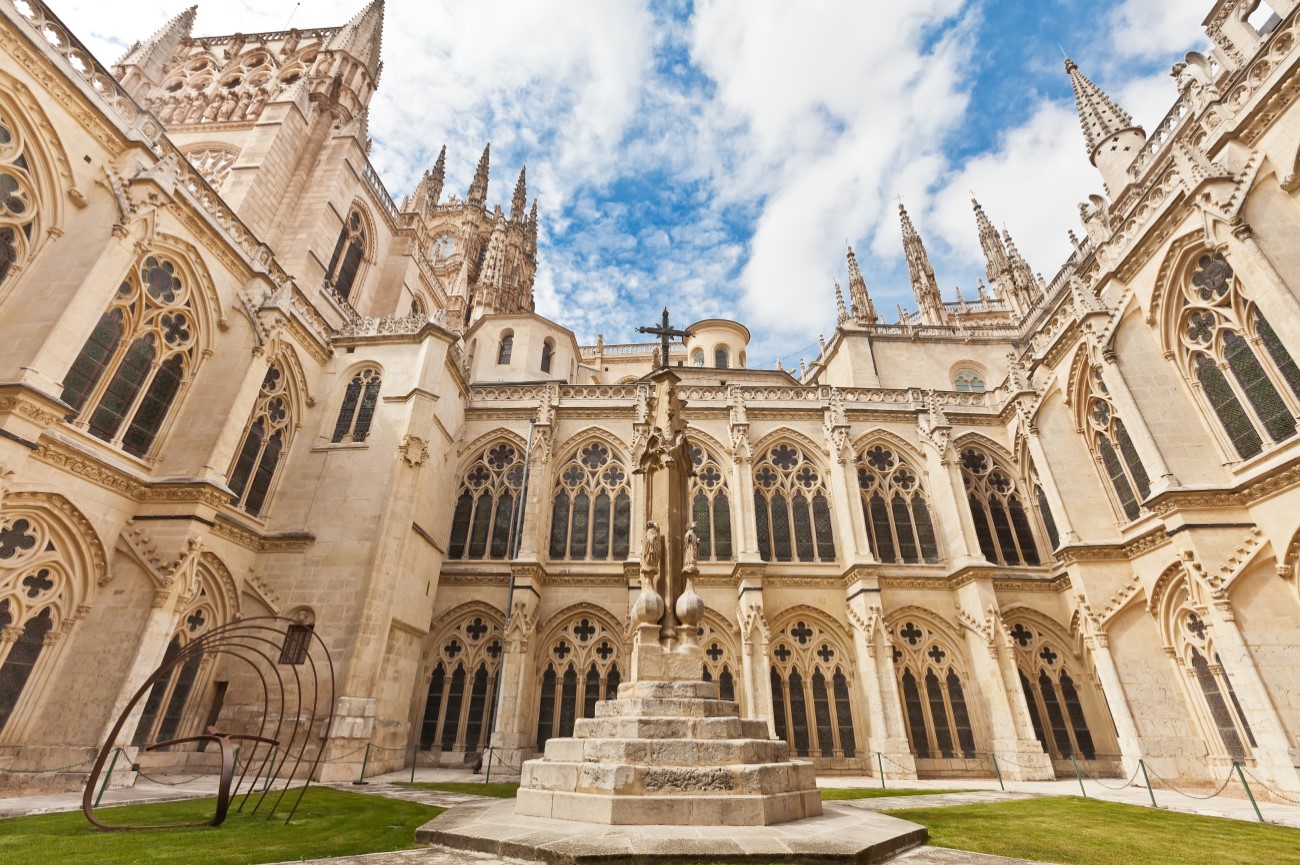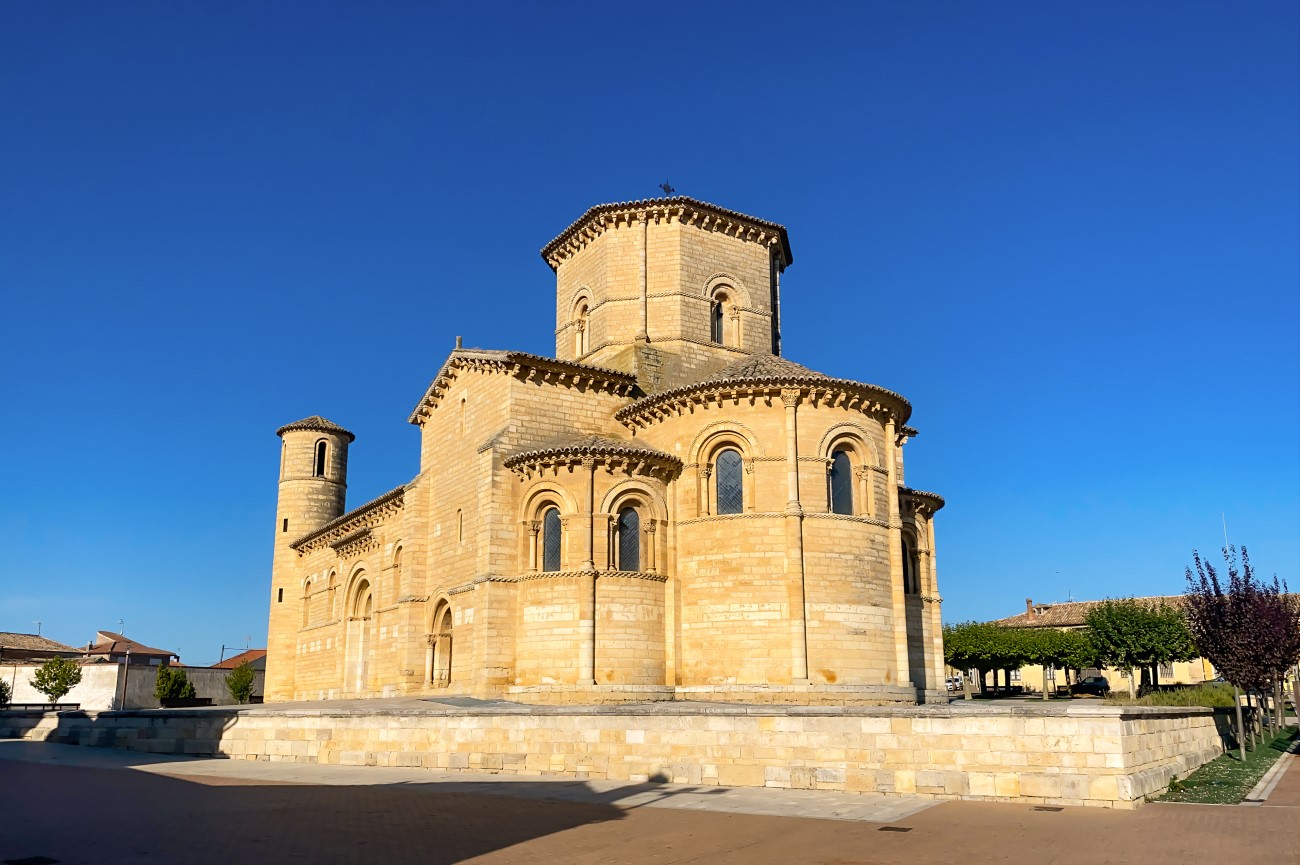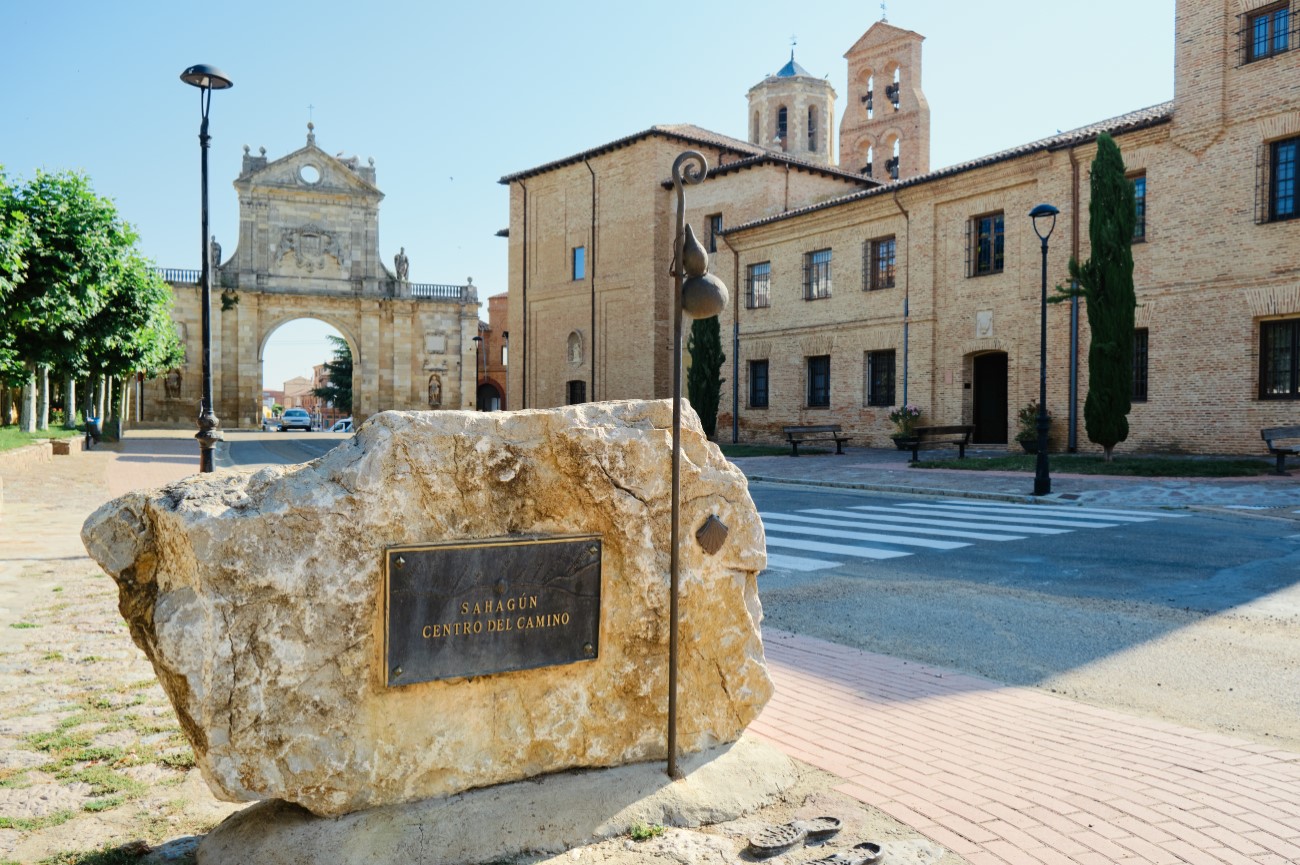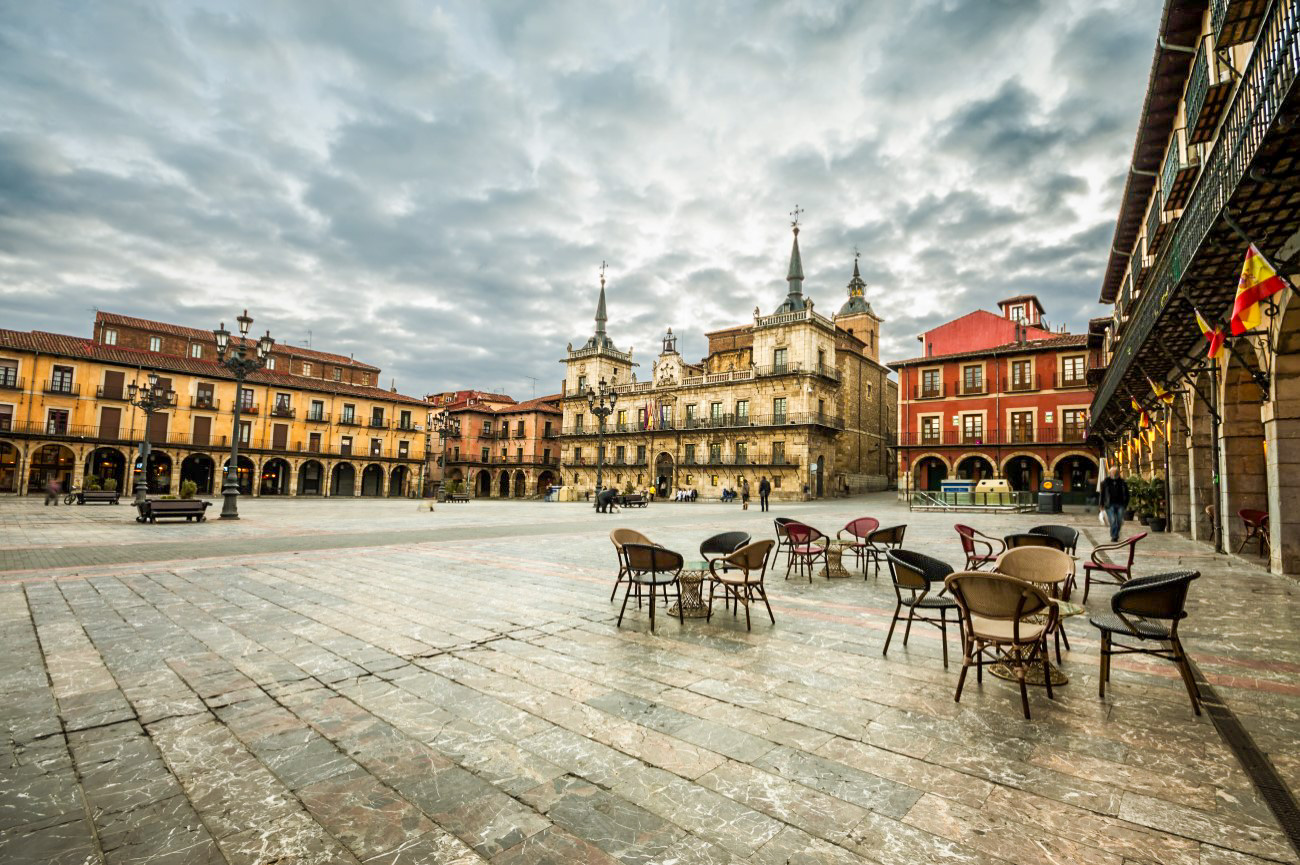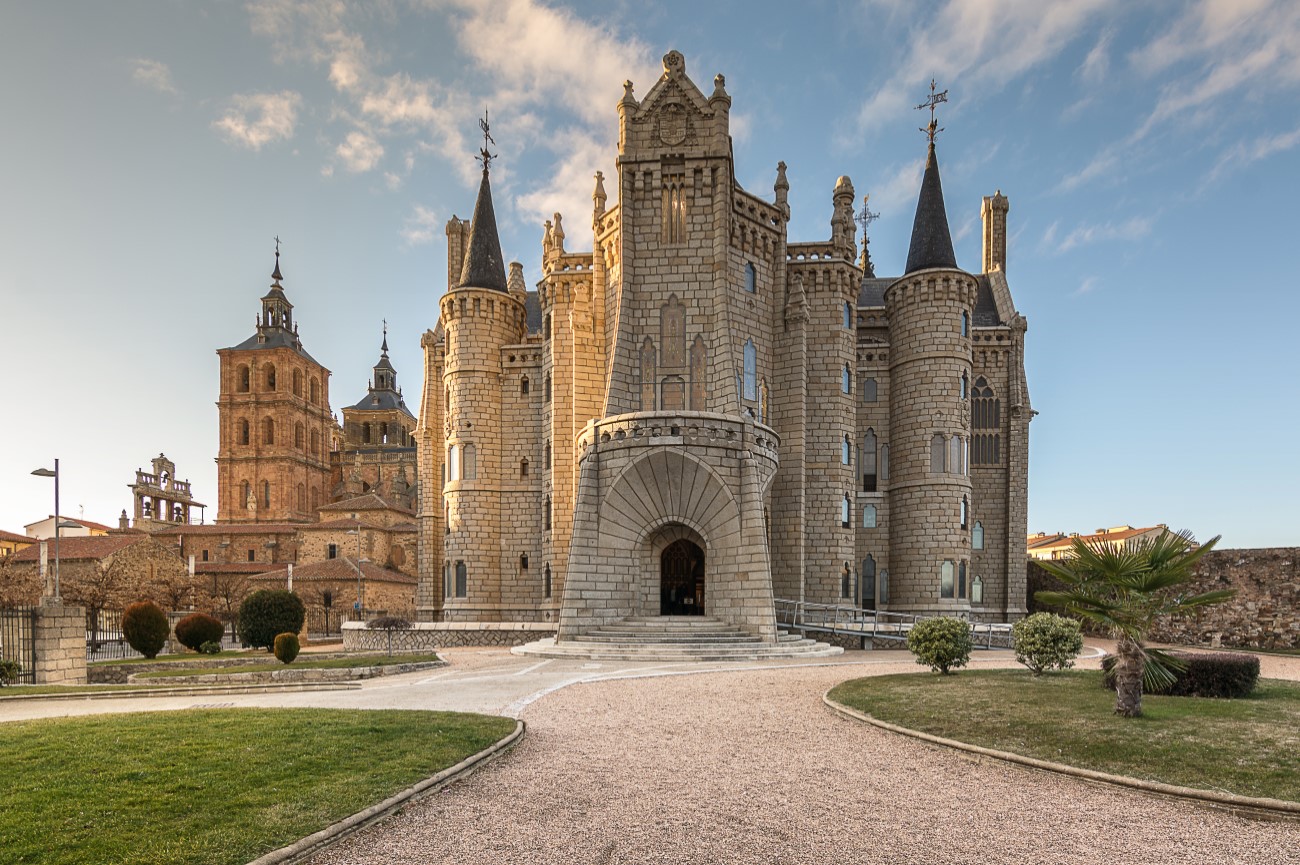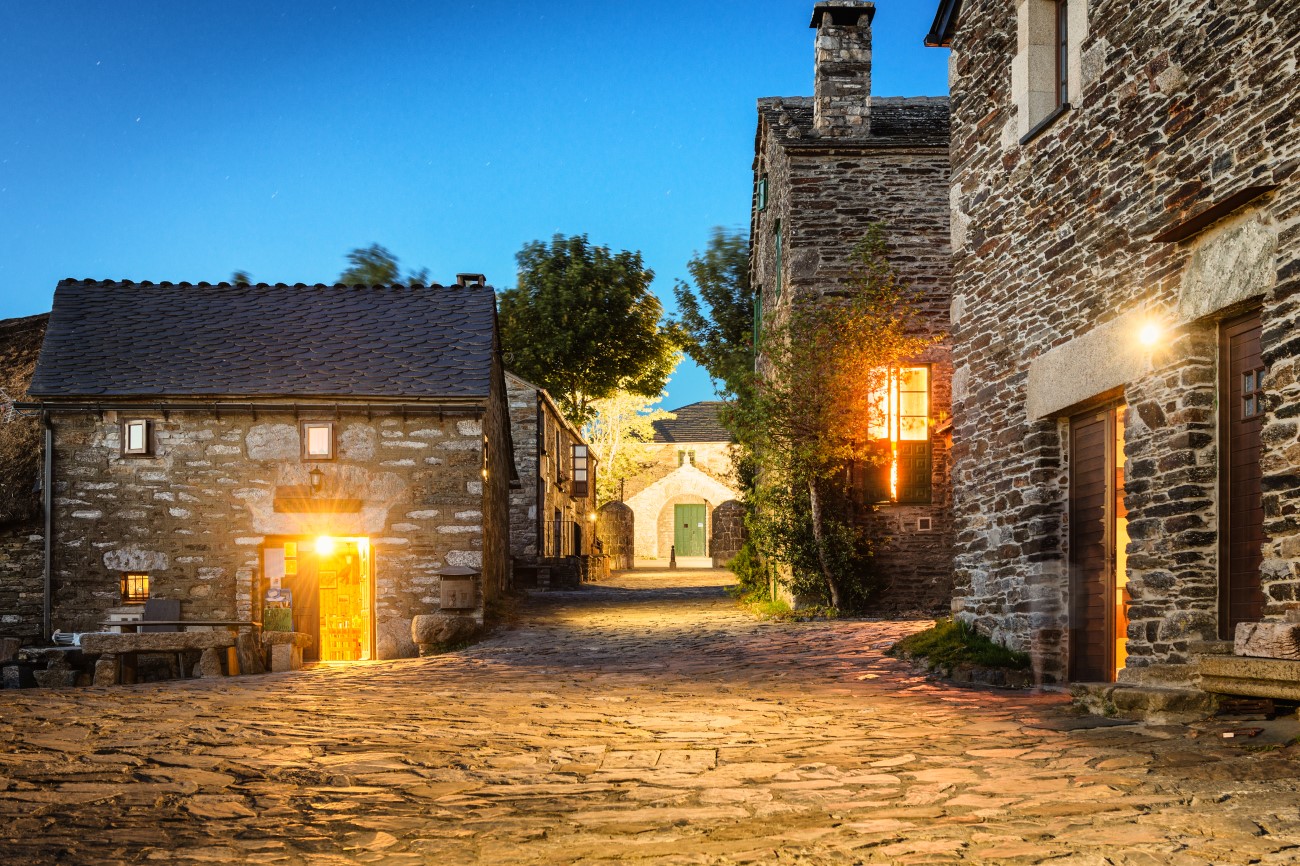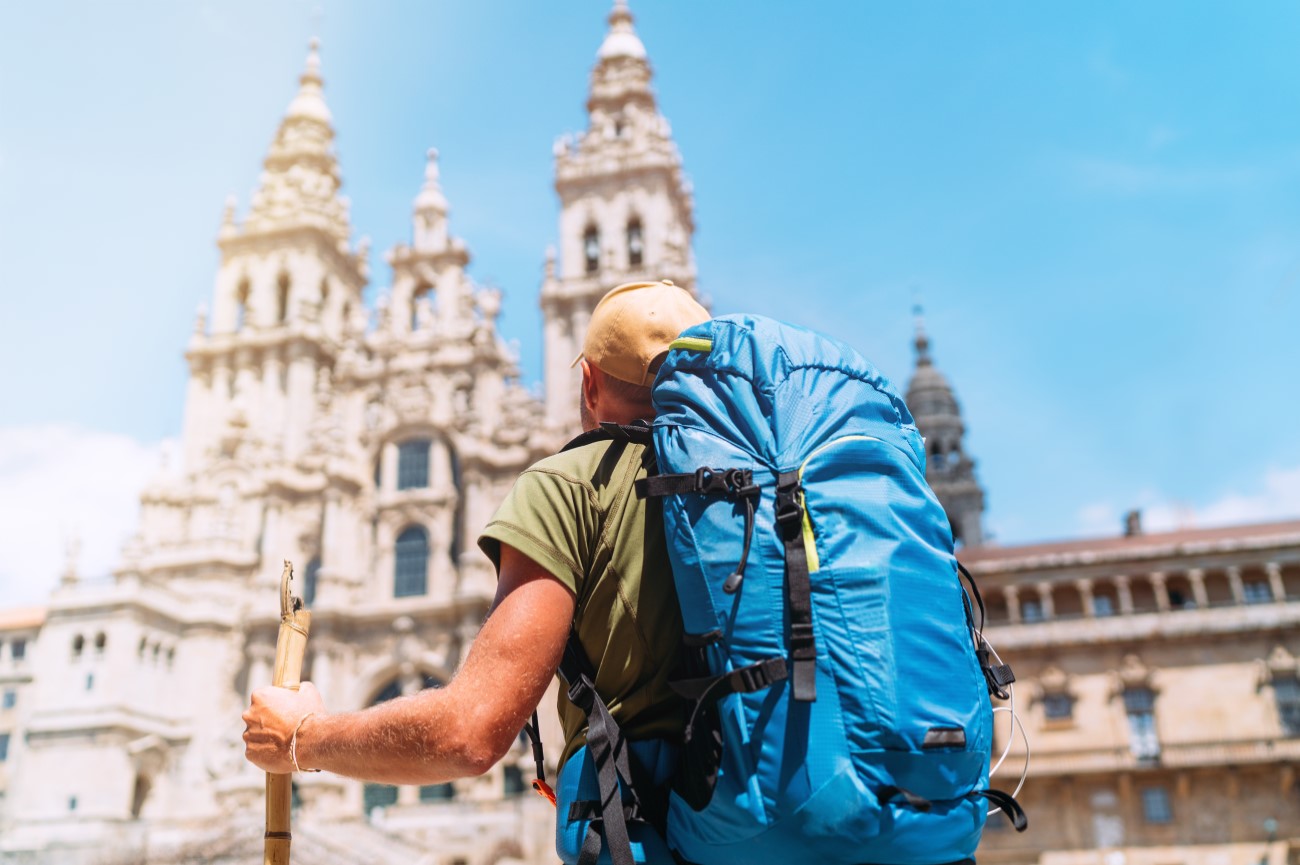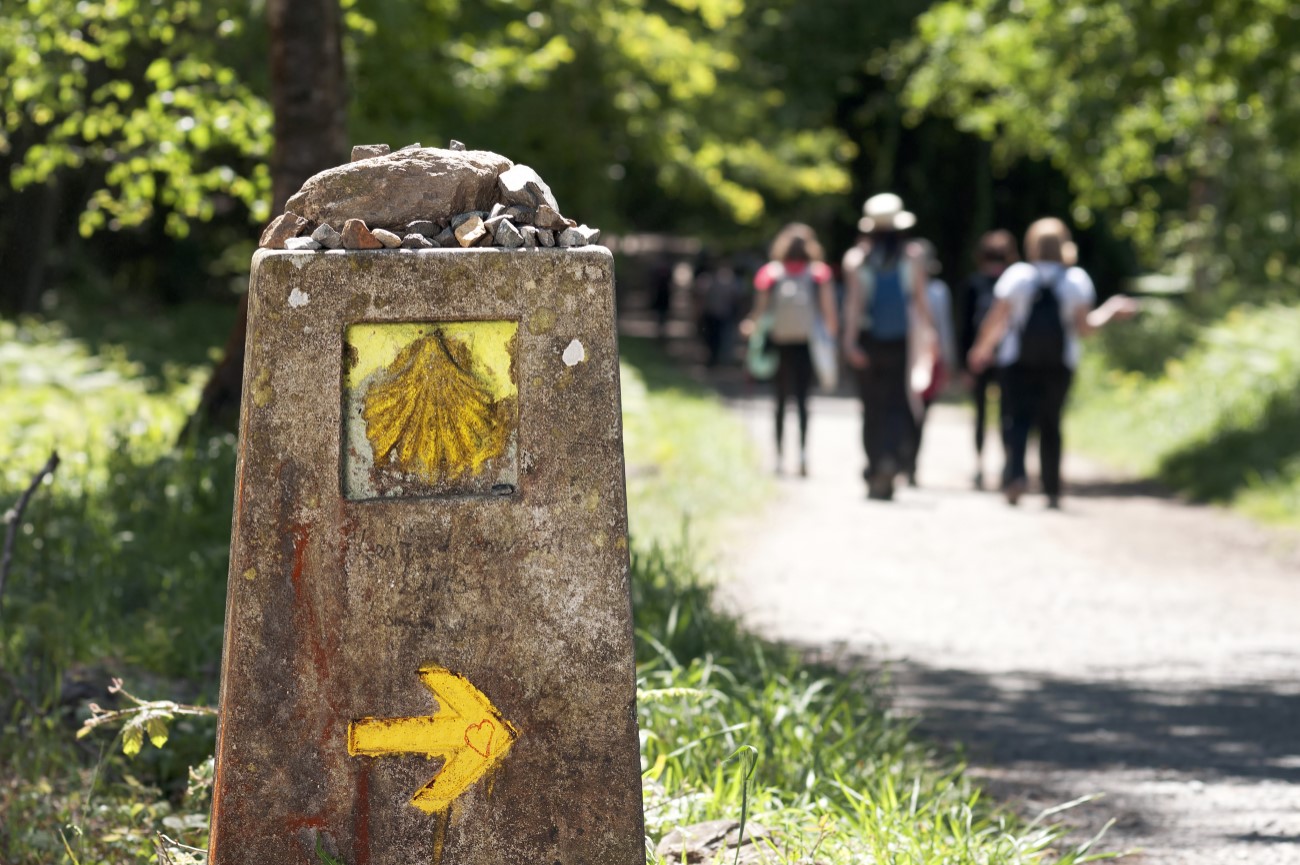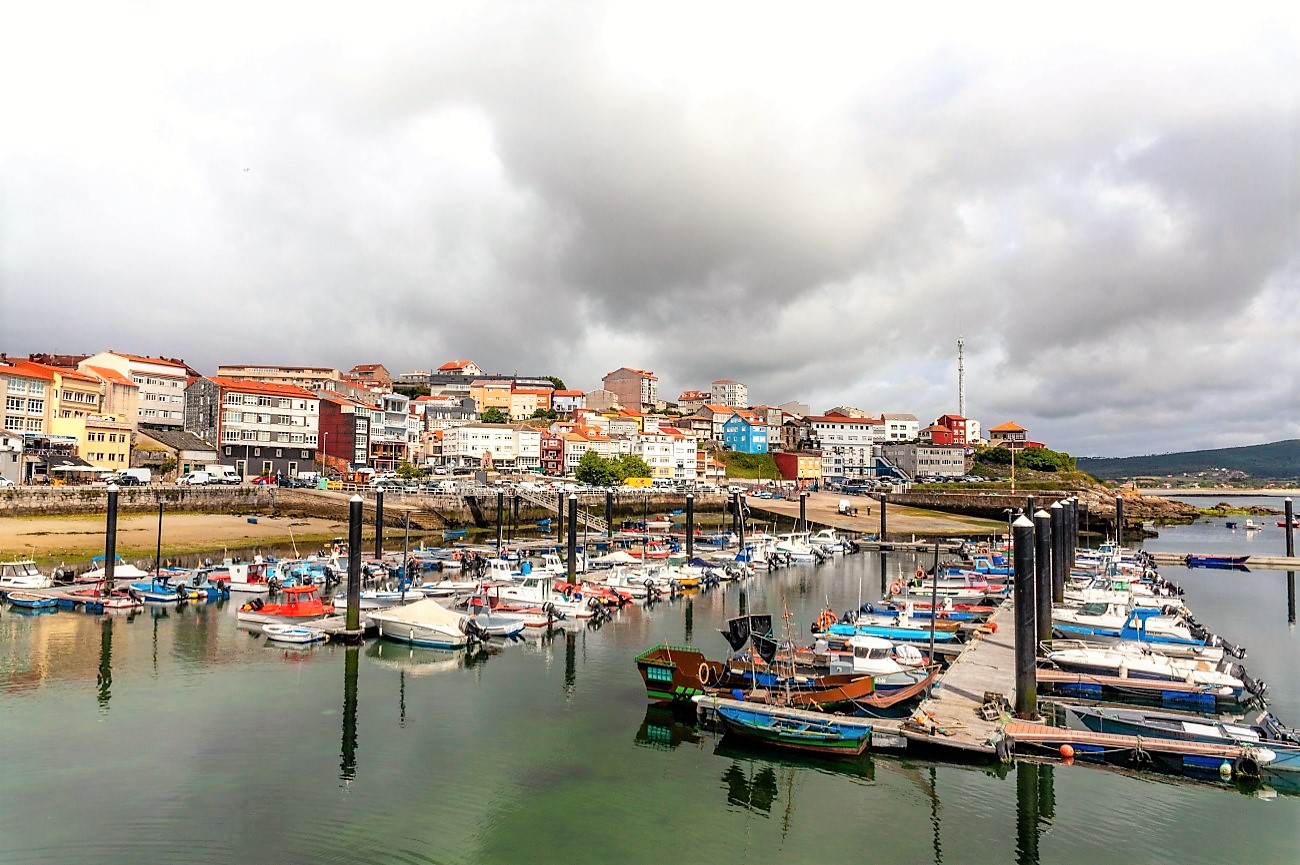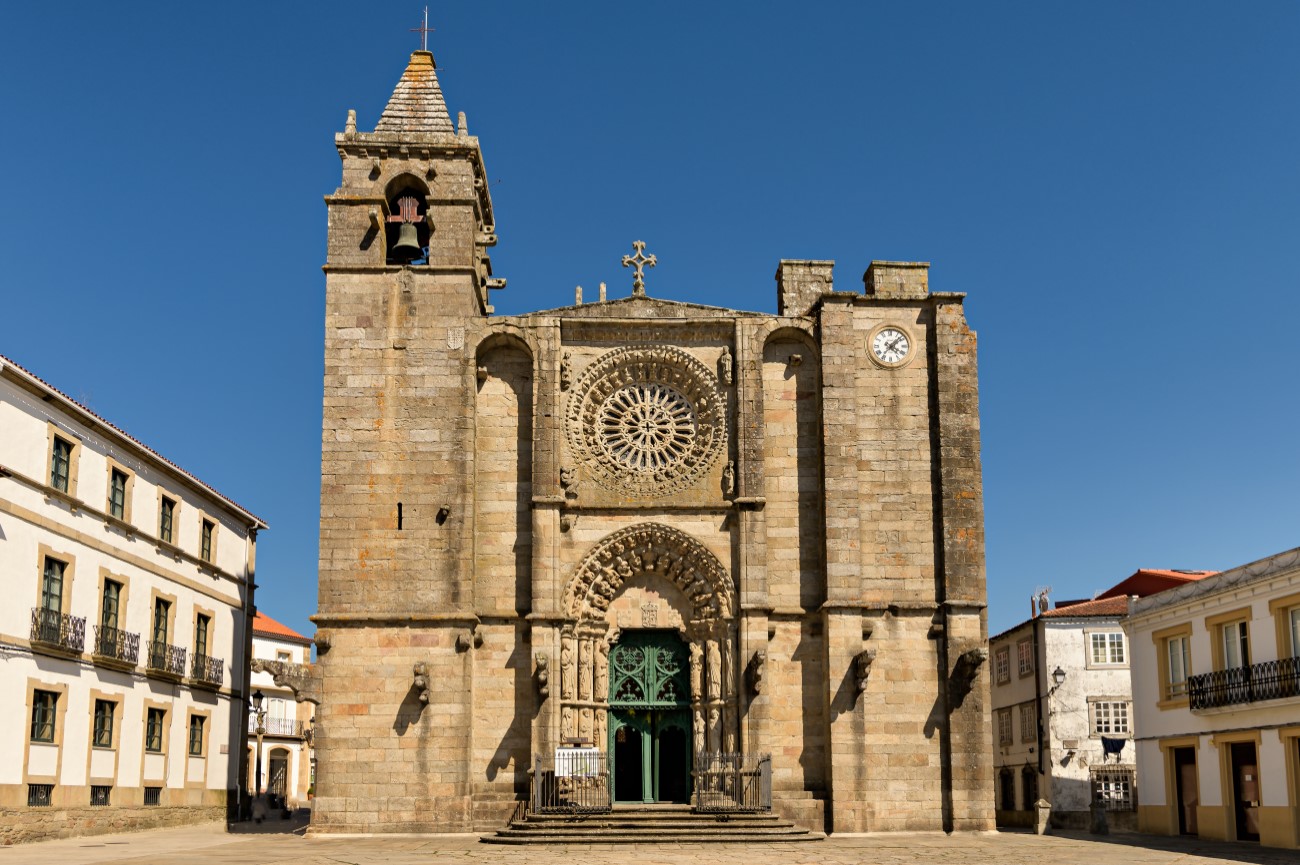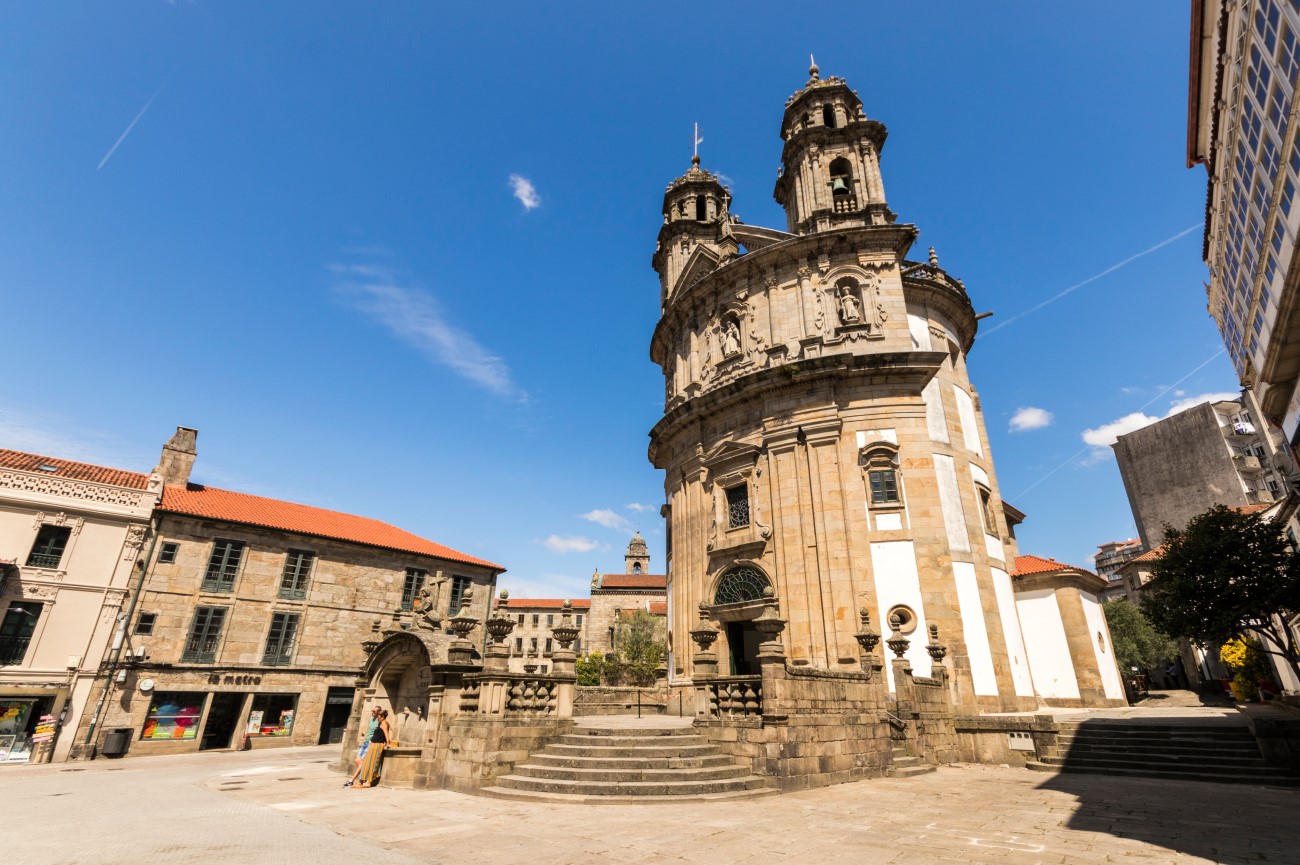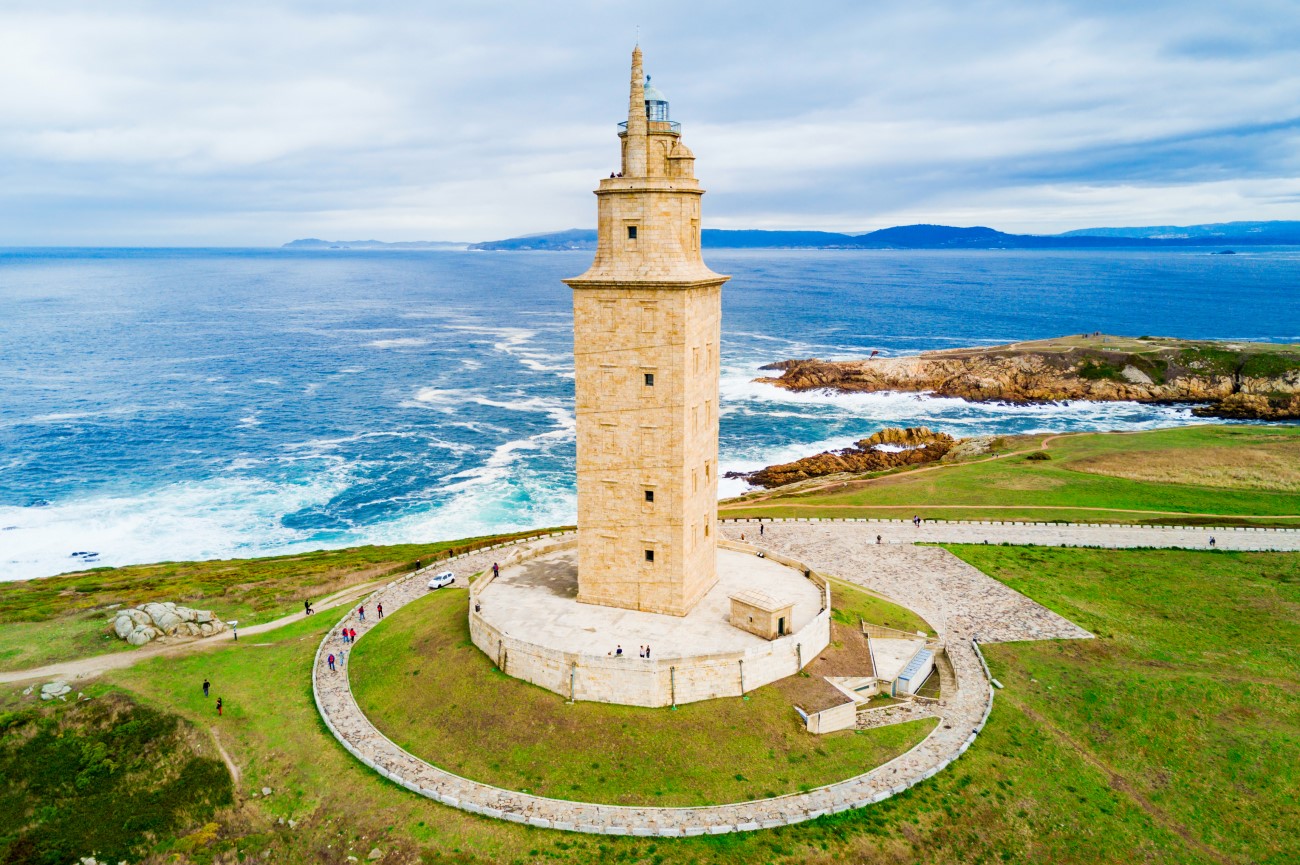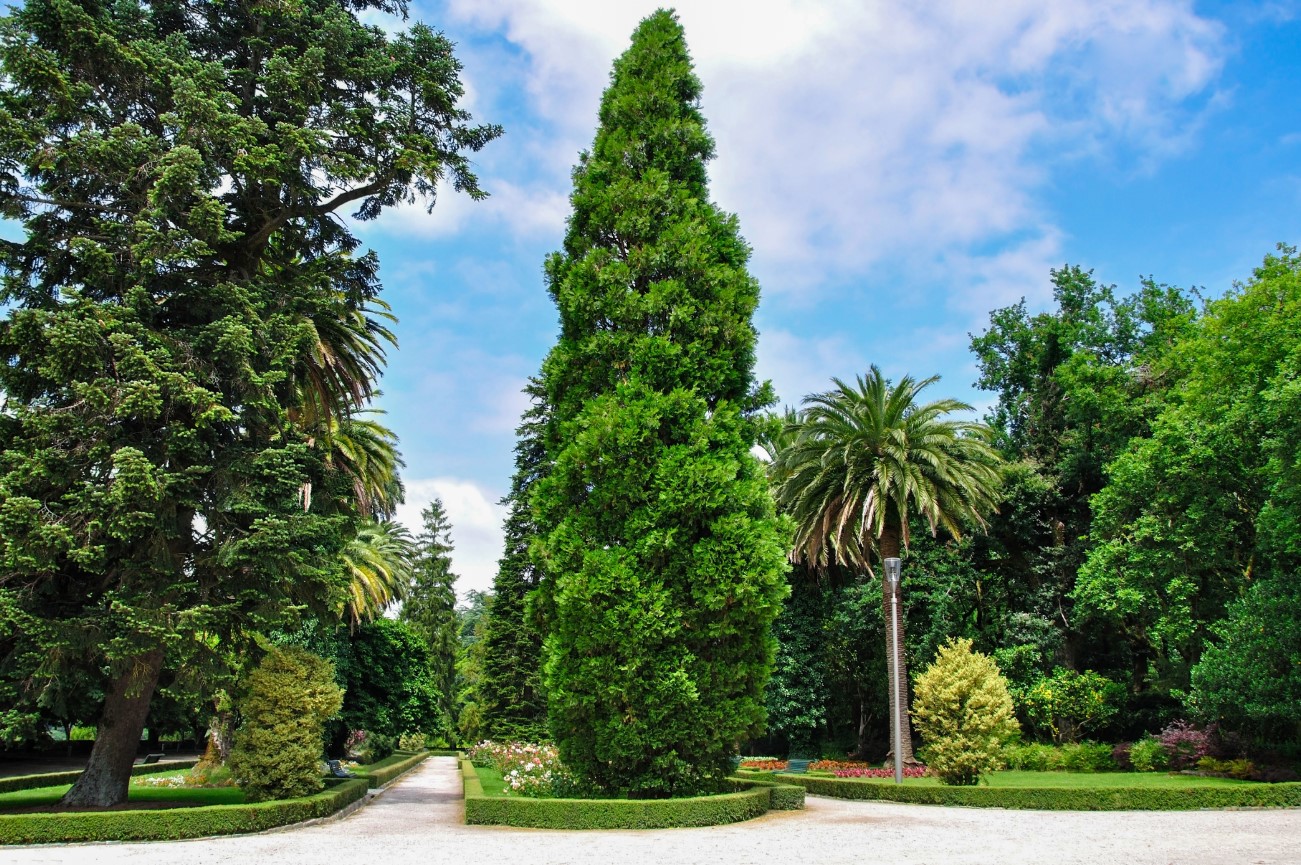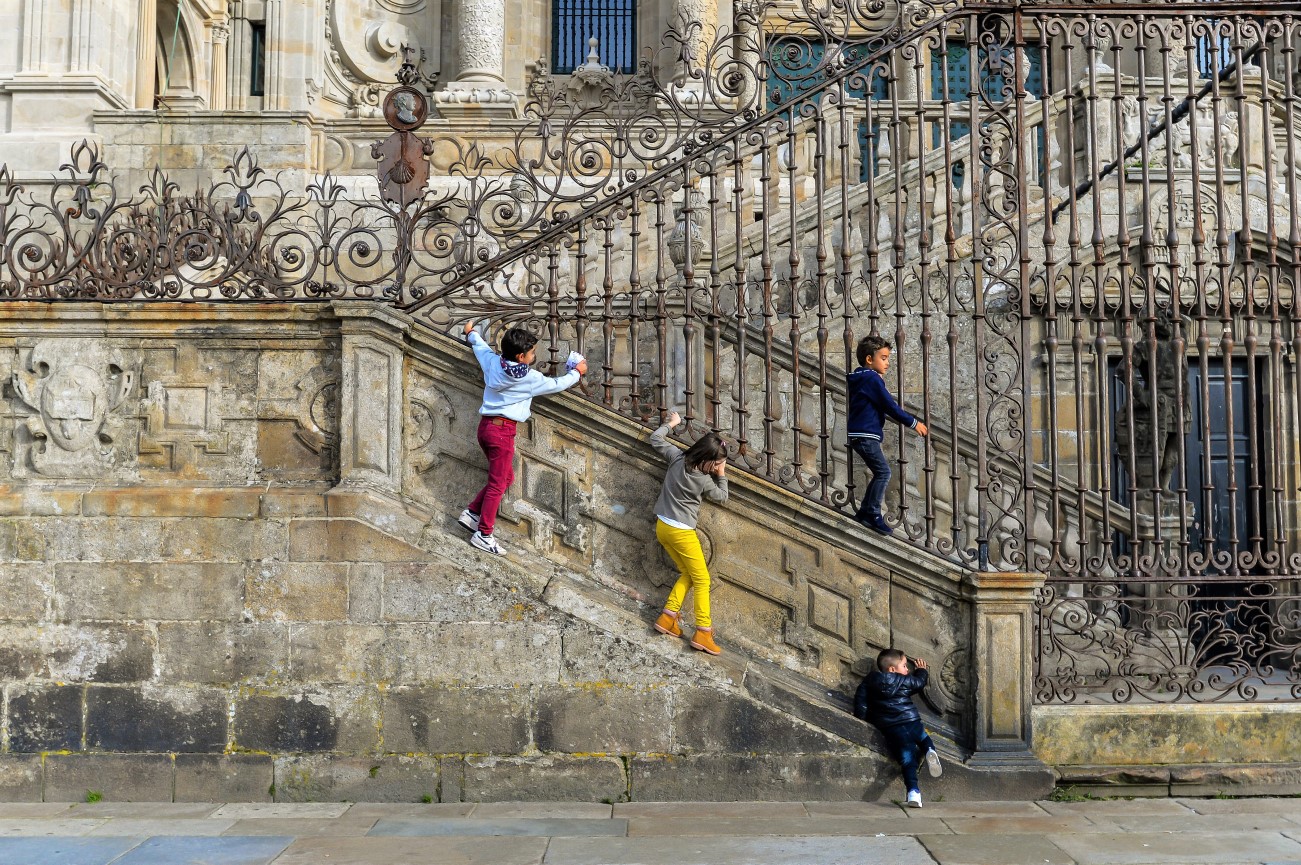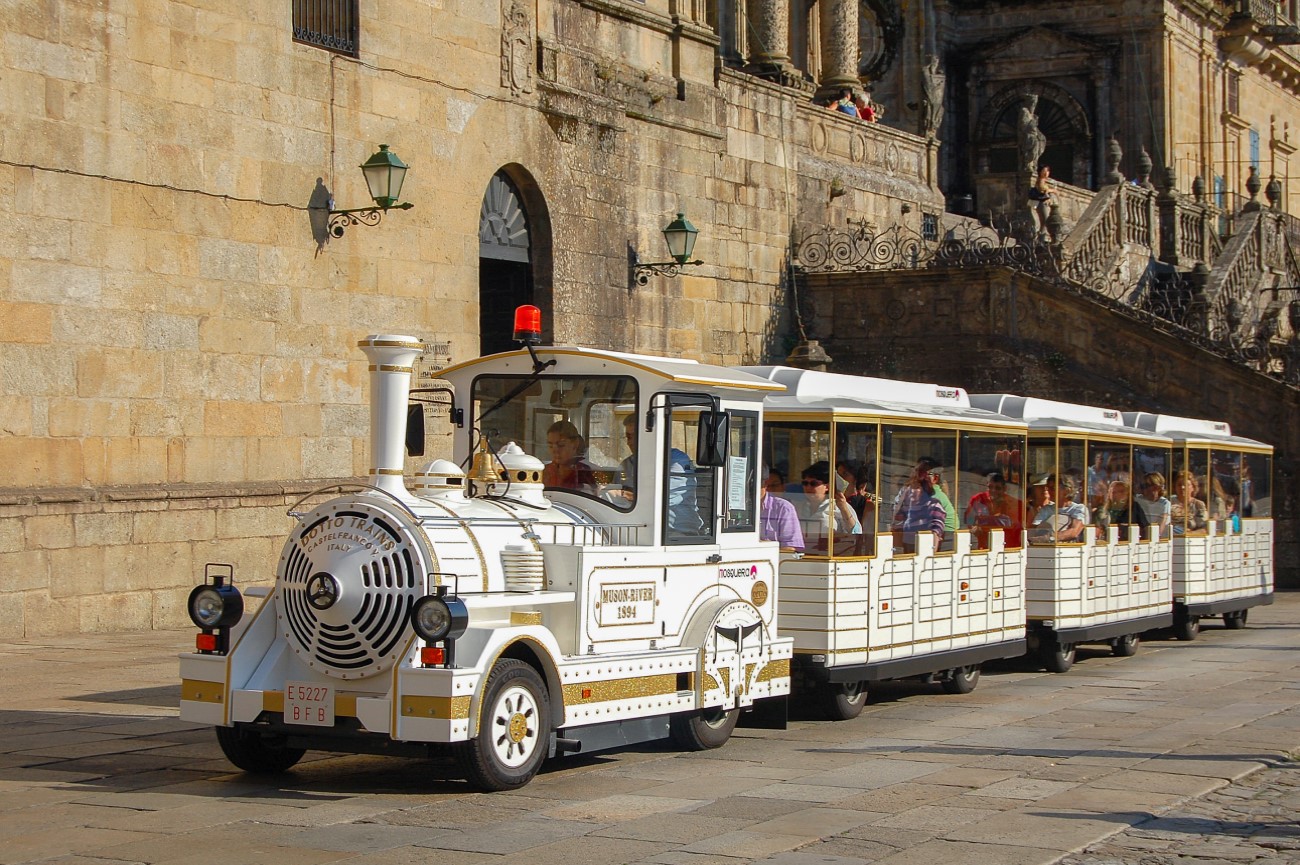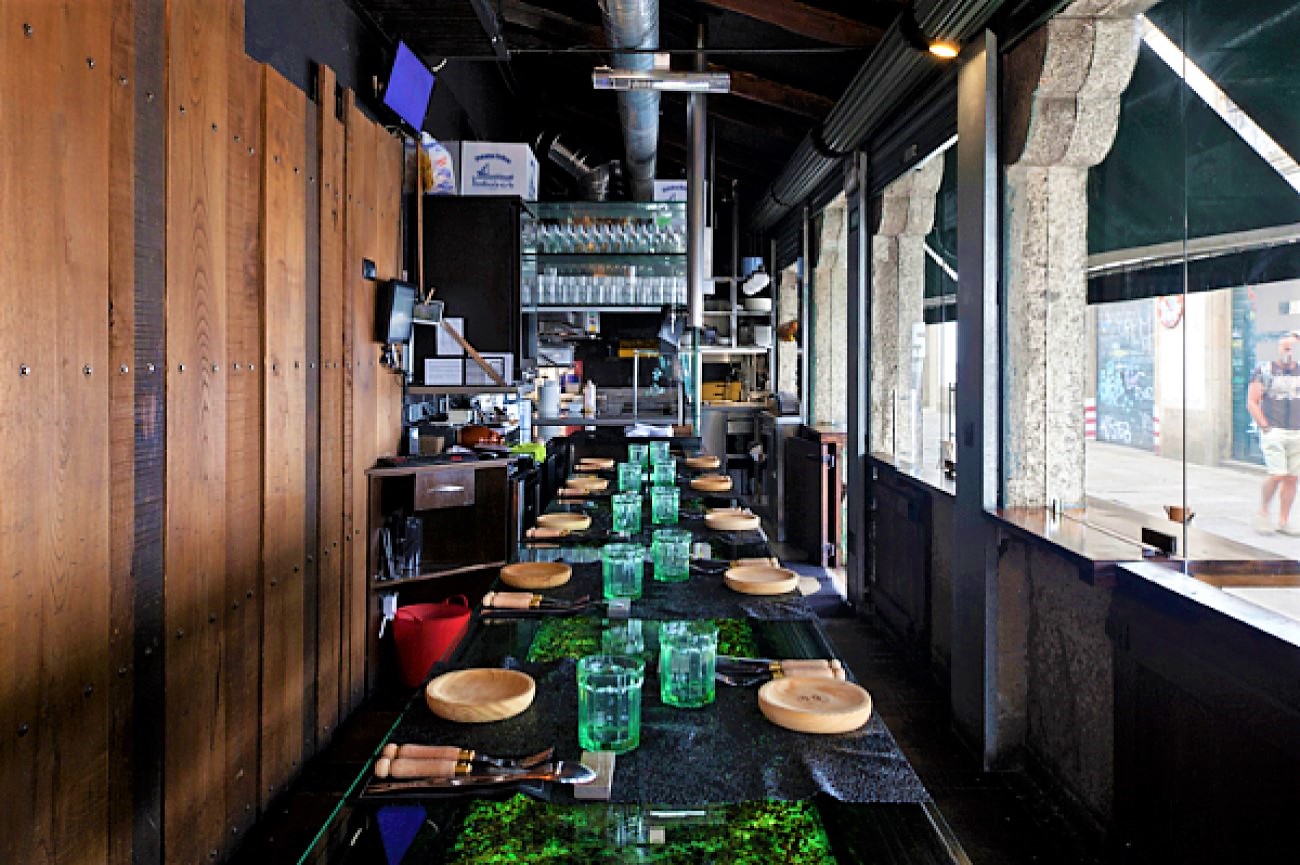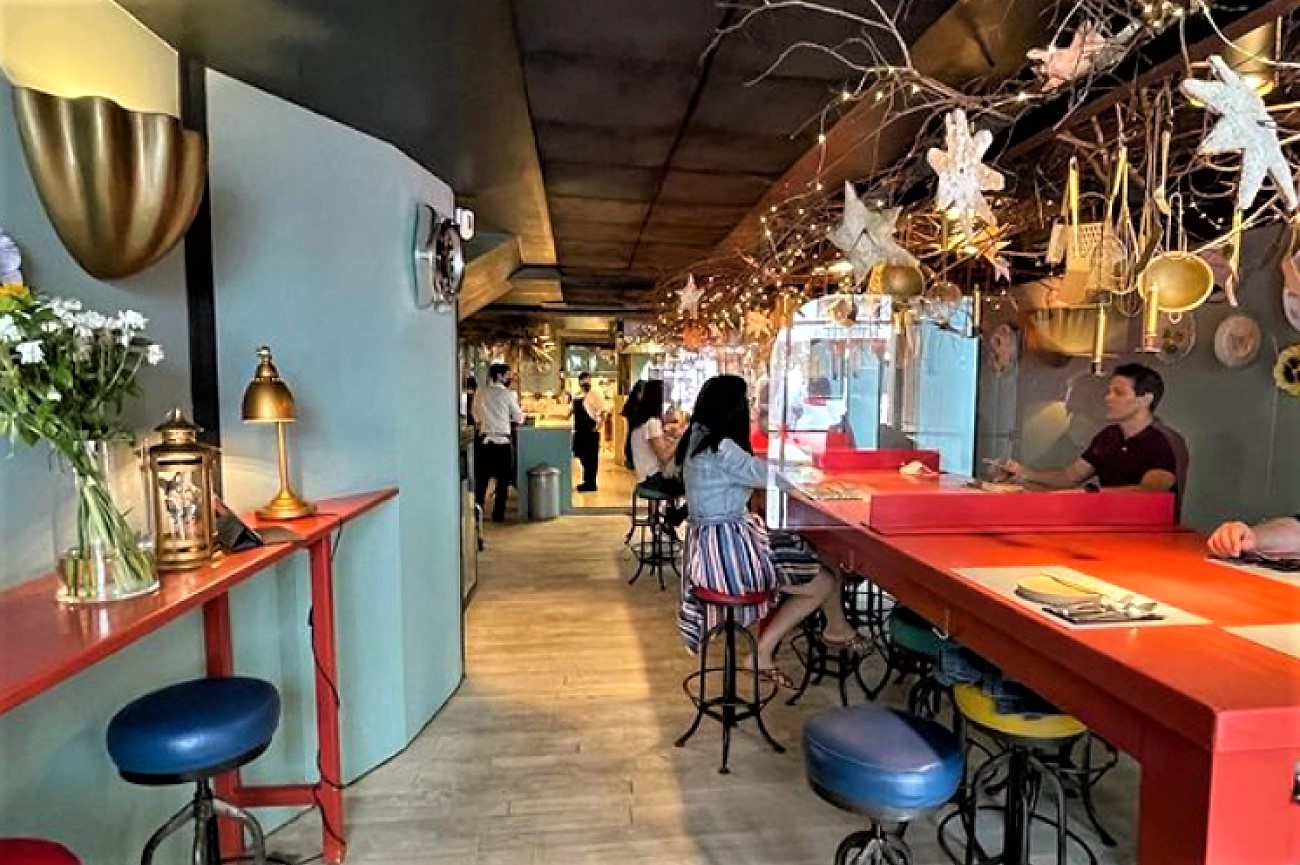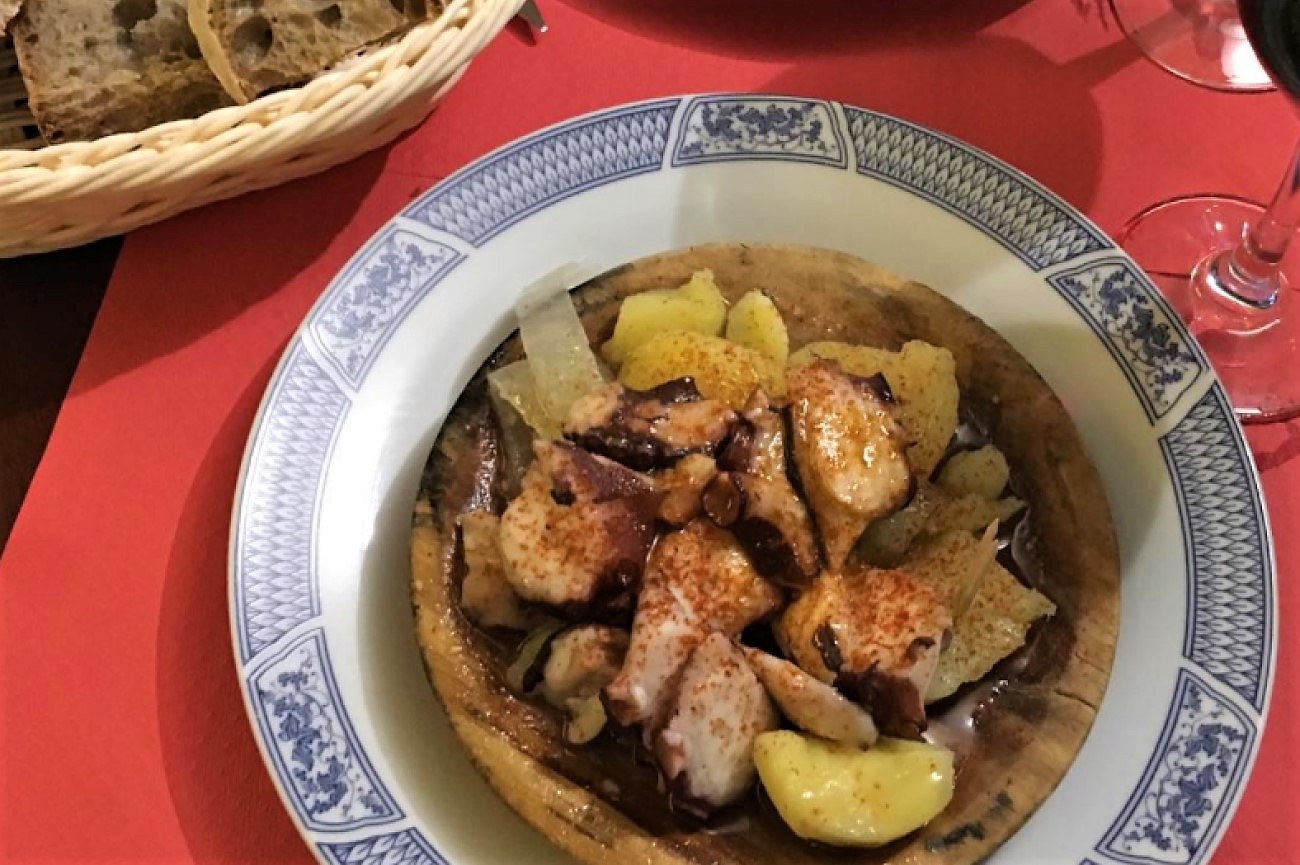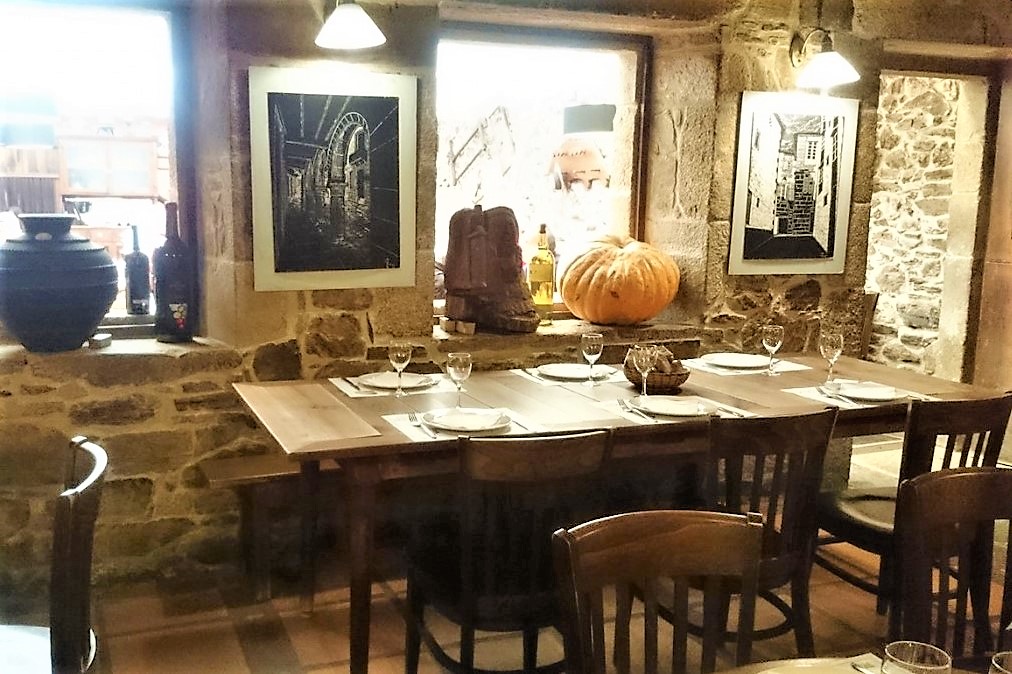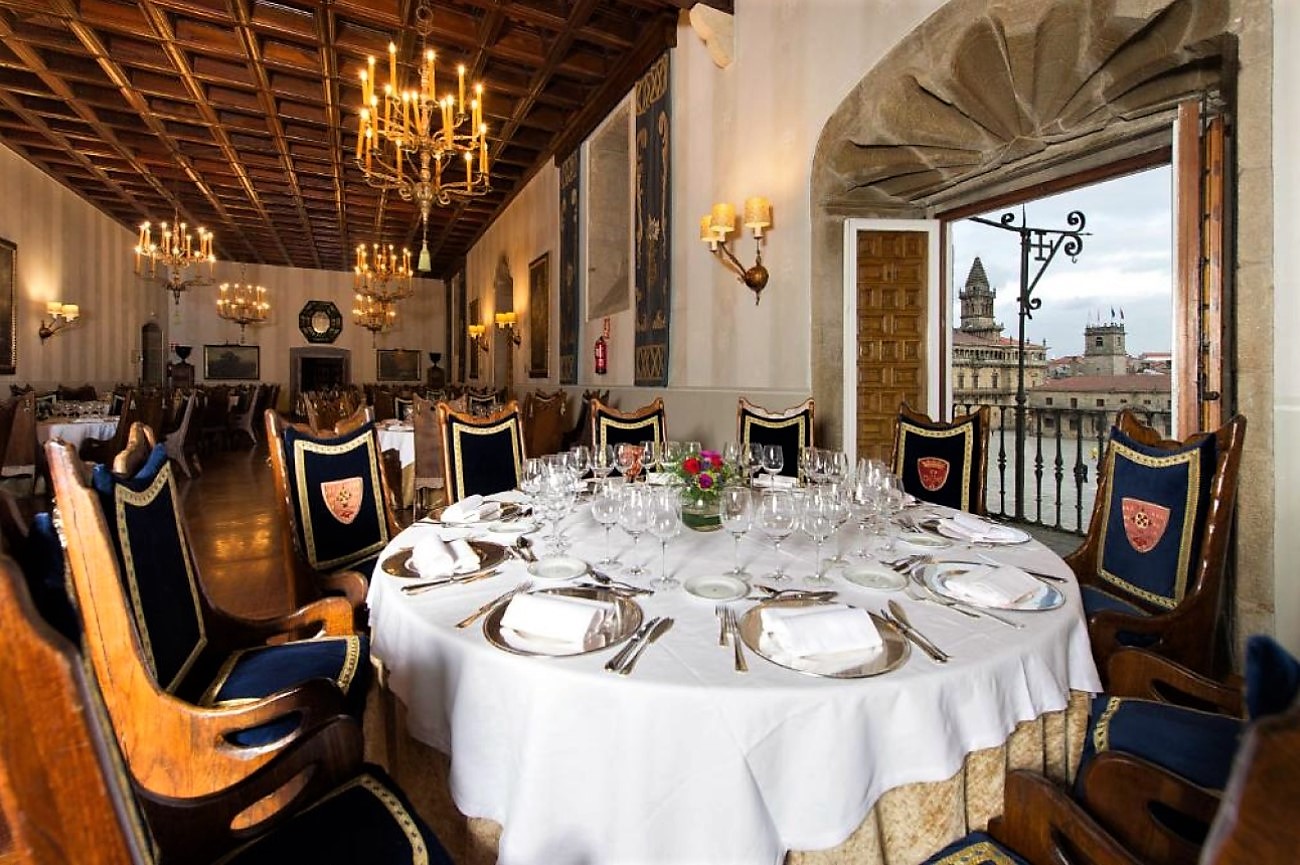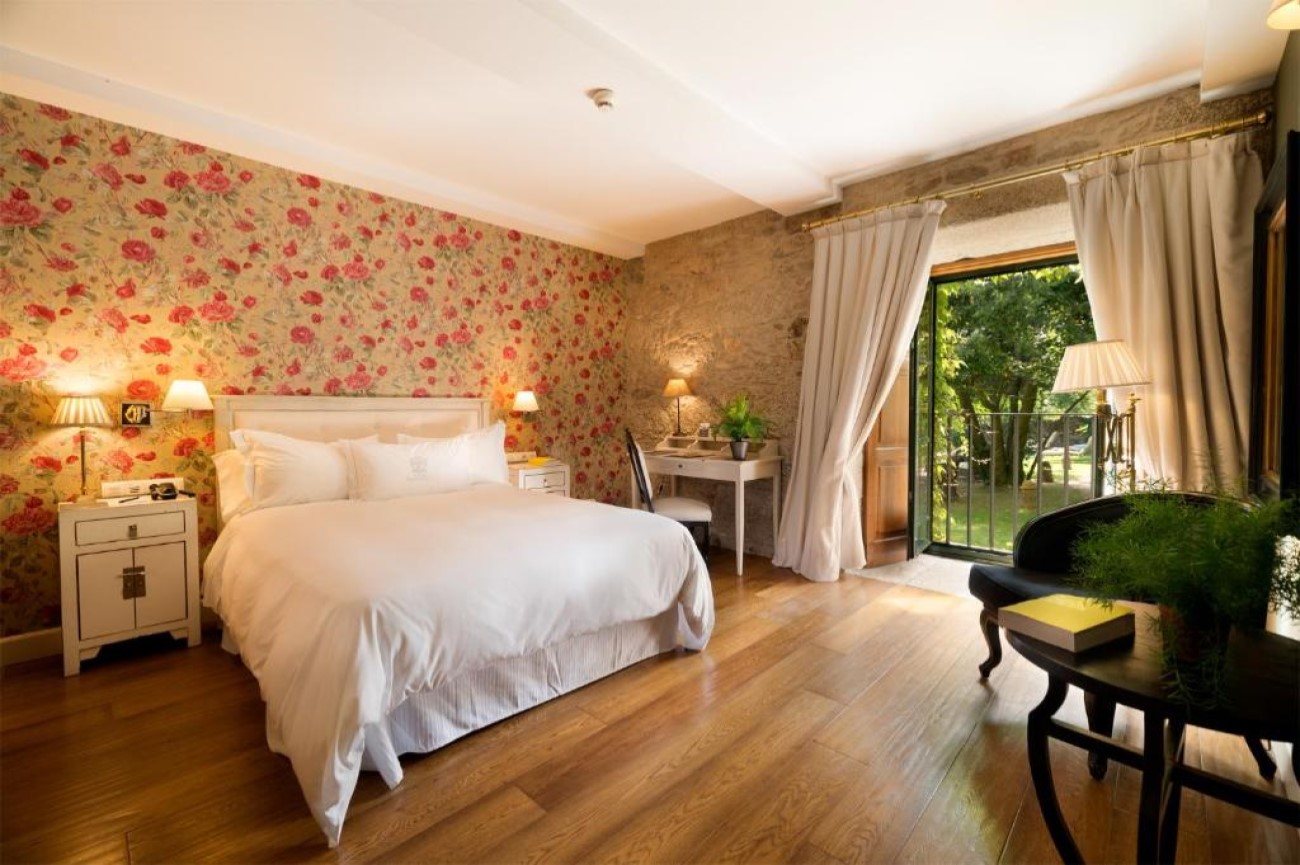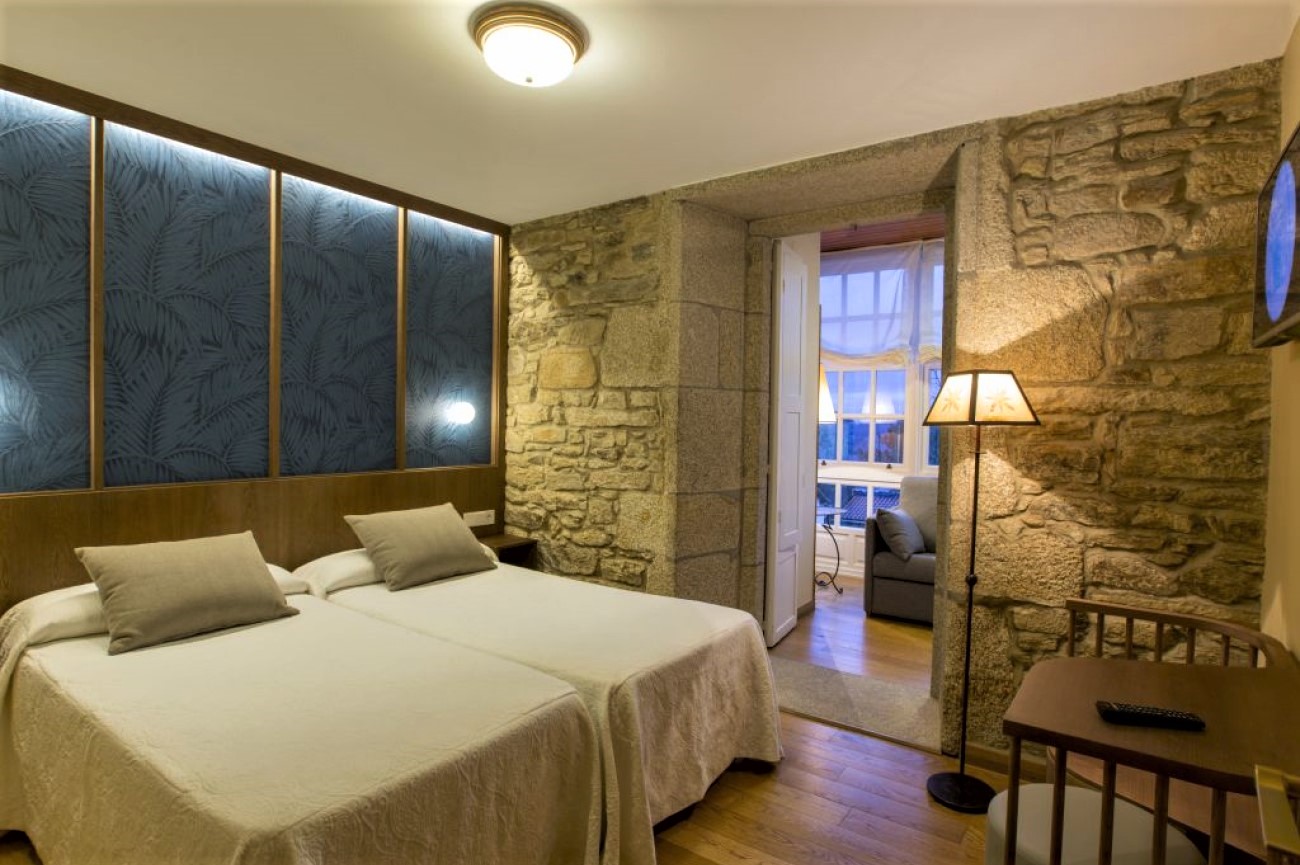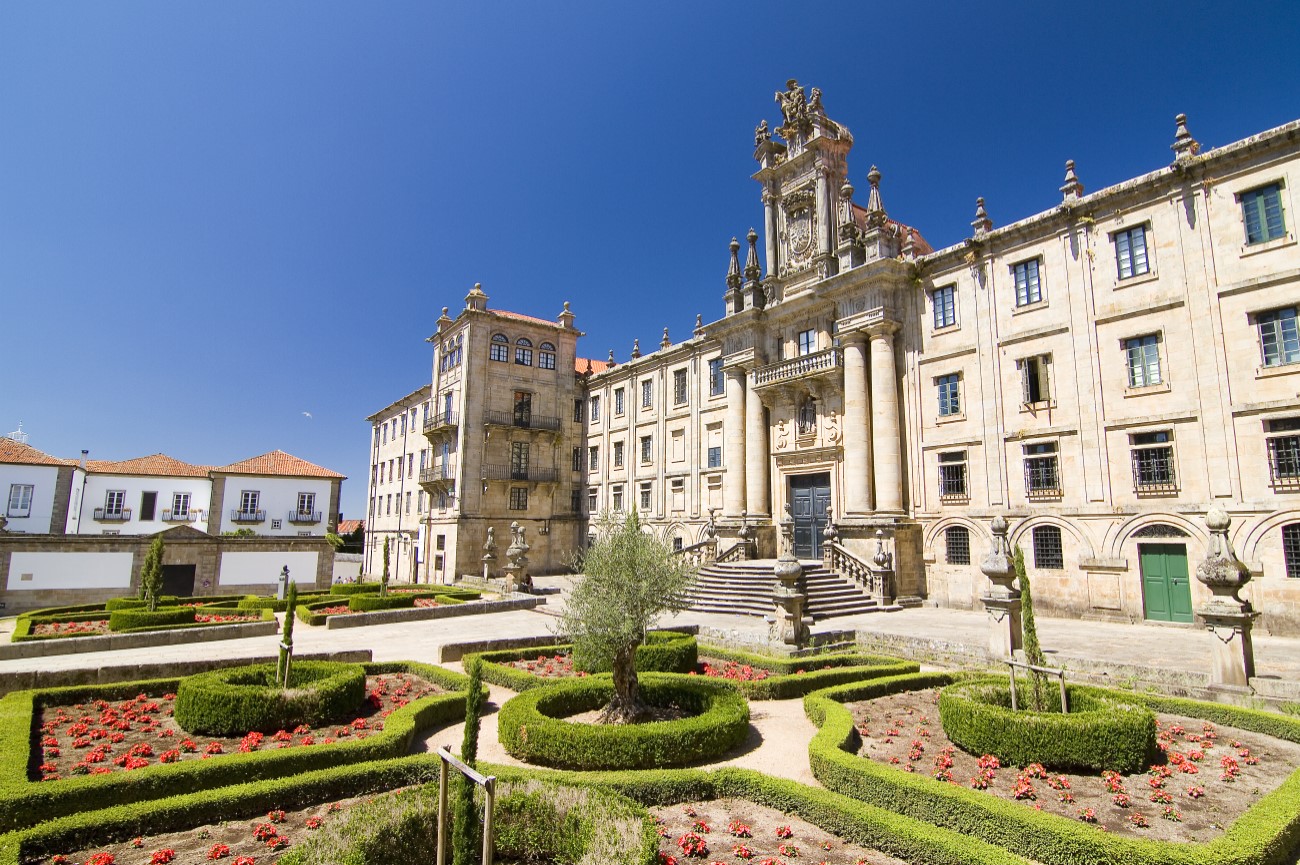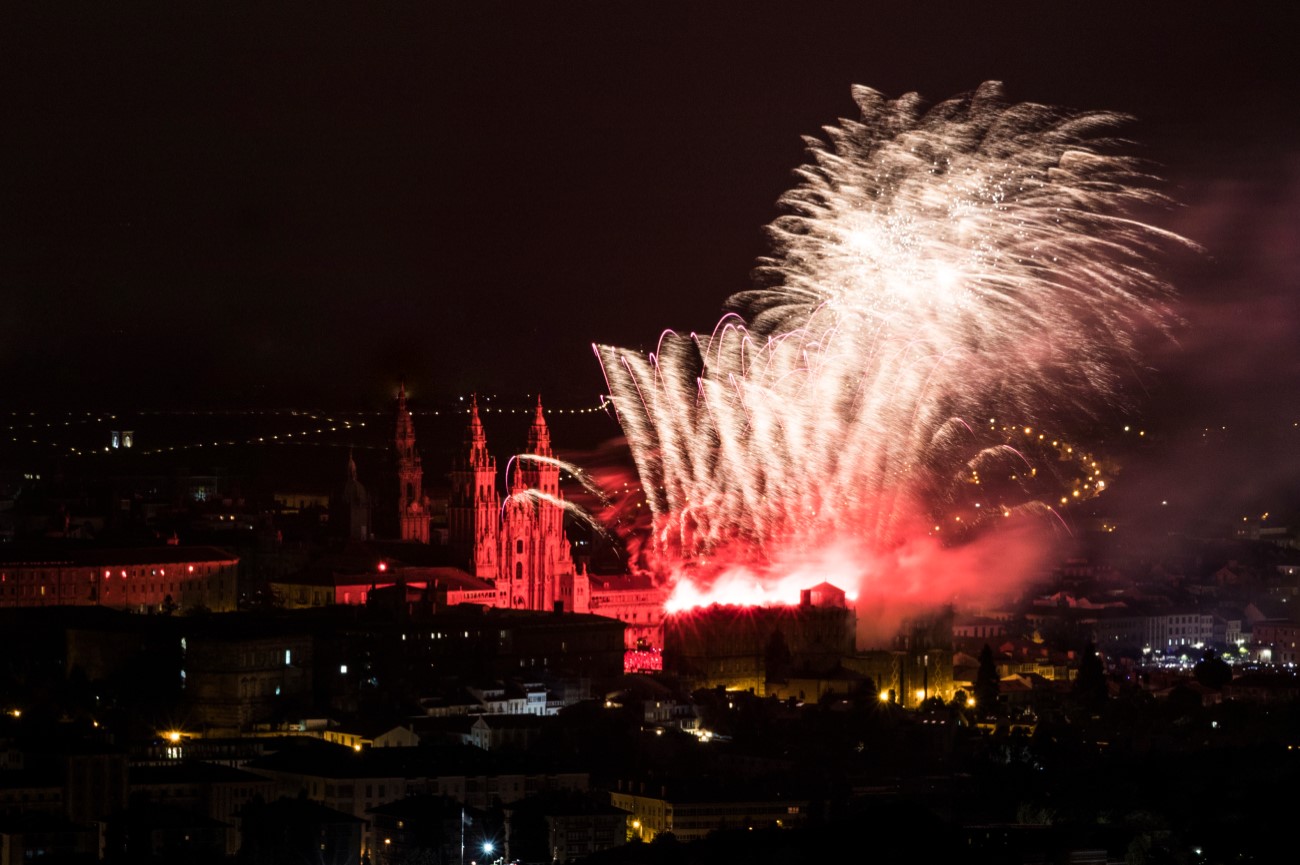Things to do in Santiago de Compostela, Spain
Santiago de Compostela is an iconic city in the north of Spain. Besides being the capital of Galicia, one of the many autonomous Spanish regions, it’s the final stop for the thousands of pilgrims that walk the Camino de Santiago. Its stone architecture is remarkable, and you can see it in every corner, from the arcaded streets to the churches and monasteries.
Santiago has a magical aura, welcoming pilgrims (and tourists) with bagpipes that echo throughout the streets. It’s on the main square, Plaza del Obradoiro, that you’ll find one of the city’s most imposing monuments: the Catedral de Santiago de Compostela, a massive Romanesque-Gothic-Baroque cathedral and one of the most important symbols of Catholicism.
The main monuments in Santiago de Compostela are all UNESCO World Heritage sites. Alongside these historical landmarks, you’ll also find fine restaurants and tapas bars where you can try delicious seafood and wine. Follow our two-day itinerary below and discover the top things to do in Santiago de Compostela, including tips about the Camino de Santiago.
Day 1

Morning: Plaza del Obradoiro
Plaza del Obradoiro is the central square of Santiago de Compostela. The name translates as the “Square of the Workshop” since there were many stonemason workshops here when the cathedral was being built. At the centre of the square lies a stone slab marking the “kilometre zero” of the Camino de Santiago, highly regarded by every pilgrim. Plaza del Obradoiro is surrounded by four important buildings, seen as representing the four city powers: the Catedral de Santiago de Compostela (the church), Hostal dos Reis Católicos (the bourgeoisie and doctors), Pazo de Raxoi (the government), and Colexio de San Xerome (the university).
Catedral de Santiago de Compostela
This imposing monument is the reason why pilgrims walk hundreds of miles to reach this city. It’s a remarkable sight, with giant towers that will make you feel small upon arrival. Initially built during the 1300s, in the Romanesque era, the cathedral suffered numerous architectural changes and additions through the centuries. Thanks to that, it now gathers elements of the Gothic and Baroque movements, making its design one of a kind. Once you’re past the first door, you’ll find the Pórtico da Gloria, the Corticela chapel and the relic of Saint John, all of which you can access for free. You only need to pay a small fee to see the rooftop viewpoint or the Cathedral Museum, where you can learn all about the cathedral’s history. There’s a mass every day at noon and, if you’re lucky, you might see the famous Botafumeiro—an 80-kilos incense spreader that swings around the main altar.
Monasterio de San Martiño Pinario
Once an actual monastery and church, this 10th-century Baroque Benedictine building now houses a university residence, a hotel and a museum. When inside, you can witness a stunning stairway and walnut choir stalls designed by Mateo de Prado, considered one of the most impressive in Galicia. The museum, church and monastery are all open to visitors for a small fee.
Old Town
Spend the rest of the morning exploring Santiago’s Old Town. Also known as the Casco Historico, the area is surrounded by stone archways, restaurants, cafés and bars. Get lost in its narrow cobbled streets and discover hidden squares, like Plaza de Cervantes with its tall bust of Cervantes atop a fountain. The district is very much alive all day, with street musicians welcoming you in every corner.
It’s also a great area to shop for souvenirs.
Afternoon: Mosteiro de San Paio de Antealtares
Next stop is the Mosteiro de San Paio de Antealtares. This monastery, founded in the 9th century by Alfonso II, started as a home for a dozen Benedictine monks. It was originally built with a single purpose: to worship Saint James’ tomb (the one responsible for the city’s pilgrimage tradition). The monks left the monastery around 1499, and the building was occupied by cloistered nuns. Since then, the nuns spend part of their day baking a typical Santiago pastry, a delicious almond cake sold to visitors from a revolving window. If you’re lucky, you might hear them practising their music or Gregorian chants as you walk by.
Plaza de la Quintana
From the monastery, head to Plaza de la Quintana, Santiago’s second-largest plaza. It’s spread throughout two levels, occupied by cafés and lively street musicians. The bottom part is known as Quintana de Los Muertos (Square of the Death) as it was the site of a cemetery, and, in contrast, the top part is called Quintana de Los Vivos (Square of the Living). On the west side of the square, you’ll find the Catedral de Santiago de Compostela. Look for the cathedral’s Puerta Santa, which opens in holy years only. The entrance is flanked by 24 biblical Romanesque sculptures created by Maestro Mateo. On the east side are the walls of the Mosteiro de San Paio de Antealtares.
Plaza de las Platerías
It’s easy to find Plaza de las Praterías thanks to its striking 1825 fountain, Fuente de Los Caballos. The piece shows four horses surmounted by a female figure holding a guiding star. Legend says that it was a star who led the way to the discovery of Santiago’s tomb. Also on the square is the Museo das Peregrinacións e de Santiago, a museum that explains the city’s pilgrimage history, and the Casa do Cabildo with its three-metre façade built in the 1750s.
Plaza de Fonseca
Just a few steps from Plaza de las Praterías is another picturesque square, the Plaza de Fonseca. Lined with cafés, this square offers unique views over Colexio de Fonseca and its stunning Renaissance courtyard. Back in 1495, this was the original headquarters of the Santiago university. Today, it houses the university library.
Eugenio Granell Foundation
If you’re an art lover, you can’t miss the Eugenio Granell Foundation, created in honour of the late Spanish surrealist painter. Besides Granell’s work, it showcases many other pieces by artists like Miró, Cruzeiro Seixas or Copley. Alongside these, there are artefacts collected by Eugenio Granell and his wife during their travels. The foundation also organises temporary exhibitions, workshops, conferences and theatre plays.
Parque de la Alameda
End the day with a stroll around Parque de la Alameda. This large park is filled with different tree types, like eucalyptus, cypresses and palms. Amid these, you can see fountains, ponds, flower beds and sculptures. The park also offers spectacular views over the cathedral, making it the perfect place to capture a photo.
Day 1 - Santiago de Compostela Tour Map
Day 2

Morning: Parque de Belvís
You’ll find Parque de Belvís alongside the Belvís watercourse. The park separates two sides of the city: the historical quarter and the Convent of Belvís’ buildings. It works as a kind of physical separation of the medieval side of Santiago. When planning the park’s project, elements like the walls, terraces, and historical paths were respected, as well as the charming lane known as As Trompas.
Mercado de Abastos
From the park, make your way to the Mercado de Abastos, one of the best-preserved establishments in Santiago. The local market has been on this site for around 300 years, but the current building dates back to 1941. It looks like a big church from the outside, but behind the doors are several vendors selling their goods. The permanent stalls face the central corridor and sell the best Santiago offers, like cured meat, fresh fish (from the Atlantic), local cheese, fruit and vegetables. The busiest and most vibrant day is Saturday when Galician folk musicians gather around to play some of their music. Inside and outside the market are also a series of restaurant stalls selling anything from seafood to Mexican tacos and filloas (Galician Crepes).
Afternoon: Contemporary Art Centre of Galicia
This museum is a must-stop for modern art lovers. The brutalist building was designed by the Portuguese architect Álvaro Siza. Once inside, you’ll get lost in the series of film and video pieces from Galician and international artists. After seeing the exhibits, climb up to the rooftop for an excellent view over Santiago’s historic quarter.
Museo do Pobo Galego
If you’re curious about the old way of living in Galicia, which you can still feel in some rural areas, this is the place to go. The Museo do Pobo Galego covers the history and origin of the Galician people. It displays exhibitions on music, architecture, fishing and agriculture. You can also see antique printing presses and costumes, plus fishing boats and the traditional bagpipes. Make sure to visit the upper floor to see the stunning triple spiral staircase designed by Domingo de Andrade around 1700.
Parque de San Domingos de Bonaval
Just behind the museum is the Parque de San Domingos de Bonaval. Before becoming a public park, this was the site of a convent of the same name. Today it’s a quiet green space where residents and tourists come to relax. You can access the park via the passage created between the Galician Contemporary Art Centre and the Museo do Pobo Galego. All the elements that once existed in the area were preserved, creating the perfect symbiosis between the old and the new. The park is also filled with historical trees, fountains and small cisterns.
Day 2 - Santiago de Compostela Tour Map
Other Things to Do in Santiago de Compostela
- Casa da Troia Museum: This small museum only opens during the Semana Santa (Easter Week) and in the summer. Back in the 19th century, this building used to be a boarding house for university students. That era was immortalized in the famous Pérez Lugín’s novel “La Casa de la Troya” and you can discover more about it in this museum.
- Convento de San Francisco de Santiago: Once a monastery, home to Franciscan monks (in the 18th century) this is now a hotel and a restaurant serving delicious food. There’s a special Pilgrim menu with the typical convent and monastery dishes. Attached to the building is also a small chapel and Holy Land museum.
- Church of Santa María a Real do Sar: As it happens with other Santiago buildings, the Church of Santa María a Real do Sar also presents a striking architecture. Built around the 1100s, this Romanesque monument gets its name from the river next to which it sits: the River Sar. Highlights include the baptismal font and the cloister carved by Maestro Mateo.
- Monte do Gozo: This is an important landmark for pilgrims, as it’s one of the closest spots to the Cathedral. Monte do Gozo means Hill of Hoy and was named like this because, once pilgrims got up there and saw the cathedral, they said “Qué Gozo”, which means “What a delight”. Today, the church towers are lost between eucalyptus trees, but this is still a meeting point for many of the Camino de Santiago routes. There's also a statue of two pilgrims pointing to the cathedral, designed by the Galician sculptor Acuña and added here in 1993.
Camino de Santiago
The Camino de Santiago (Way of St. James) is one of the oldest pilgrimages in the world. It dates back to the medieval times when pilgrims began walking towards the Santiago Cathedral, Saint James’ supposed resting place. The “original” Camino begins in France, at Saint Jean Pied de Port, and goes around the northern edge of Spain—all the way to Santiago. The Camino extends for about 800km and takes you approximately 30 days to walk, even though it all depends on how you travel (most people go by foot or bicycle). Even though this is a Christian tradition, you don’t need to be a believer to walk the Camino—you can be an adventurous person looking for a new challenge or purpose in life. Nowadays, there are a lot of Caminos and thus, different starting points. Below are some of the best Camino de Santiago Routes.
Camino de Santiago Routes
- Camino Francés: The Camino Francés might be the most walked path thanks to the commodities it offers along the way. It can be hard to find a hostel in some of the routes, but it’s much easier if you walk the French Camino. This route officially starts at Saint Jean Pied du Port, where other Caminos converge, with pilgrims arriving from different parts of Europe.
Camino Francés Route Map
from Saint Jean Pied du Port to Santiago de Compostela
- Camino del Norte: The Northern Way crosses the coast of the so-called “Green Spain”. It starts in the Basque Country and goes through Cantabria and Asturias before reaching Santiago (for about 700km). Camino del Norte starts in San Sebastián and offers stunning seaside views along the way.
Camino del Norte Route Map
from Donostia-San Sebastián to Santiago de Compostela
- Camino Portugués: The Portuguese Way starts in Lisbon, Portugal’s capital. In comparison to other routes, this is a flatter one, even though it’s still challenging. The Camino Portugués lasts for about 612km and passes through Porto (Portugal) and Pontevedra (already in Spain). You’ll find some facilities along the way, but most of the path is done next to motorways.
Camino Portugués Route Map
from Lisbon to Santiago de Compostela
- Via de la Plata: This may be one of the longest Camino de Santiago routes, extending for almost 1000km. It’s the route to walk if you’re a Roman history fan, as this path follows an old Roman route north from Seville. It goes through a lot of historical cities, such as Zamora, Salamanca and Mérida.
Camino Via de la Plata Route Map
from Seville to Santiago de Compostela
- Camino Inglés: The English Way is the one most British people choose to walk. Pilgrims typically arrive by boat from Britain and start walking either at A Coruña or Ferrol. This route is shorter than others and extends 75km from A Coruña or 113km from Ferrol. If you’re planning to walk this Camino, you should know that, if you choose the first option, you won’t be given a Compostela (the Camino’s accreditation) as you arrive at Santiago—for that, you need to walk 100km at least.
Camino Ingles Route Map
from Ferrol to Santiago de Compostela
Camino Ingles Route Map
from A Coruña to Santiago de Compostela
- Camino Primitivo: This Camino is one of the most challenging, as it passes through a good amount of hills and faces unpredictable weather. The Camino Primitivo starts very close to Oviedo, passing through Lugo and extends for about 290km.
Camino Primitivo Route Map
from Oviedo to Santiago de Compostela
- Camino de Finisterre: After arriving in Santiago, many pilgrims opt to extend their walk to Finisterre—one of the most western European points. Finisterre translates to the “end of the world”, and to get there, you’ll have to walk 88km more. You can also finish your pilgrimage in Muxia if you want to walk an extra 29km. In both places, there are facilities offering the Compostela.
Camino de Finisterre Route Map
from Santiago de Compostela to Finisterre and Muxia
- Camino Vadiniense: This is one of the oldest and longest routes of the Camino, extending for more than 200km. This Jacobean route starts in San Vicente de la Barquera, joining both the Camino del Norte and the Camino Francés along the way.
Camino Vadiniense Route Map
from San Vicente de la Barquera to Mansilla de las Mulas
Top Sights Along the Camino de Santiago:
- Saint Jean Pied de Port (France): This is the starting point for the Camino Francés. A small village filled with ancient houses and stone archways marks the beginning of your journey. Before leaving, make sure to stop by the Pilgrim’s Office to pick up your passport so that you can receive your stamps along the way.
- Pyrenees: If you opt to walk the Camino Francés, starting in Saint Jean Pied du Port, you’ll have the chance to enjoy the views over the Pyrenees Mountains. Make sure to plan your arrival for clear skies.
- Burguete-Auritz: Located in between forests and mountains, the town of Burguete is famous for appearing in Hemingway’s novel “The Sun Also Rises”. It’s worth taking a hike from here to the village of Espinal, a medieval route that passes through pine trees, oak trees and wildflowers.
- Pamplona: Once in Spain, you’ll likely pass by Pamplona, the capital of the Navarra region. Famous for the San Fermín Festival (the “Running of the Bulls”), each July, Pamplona is worth the visit in other times too. Top attractions include the Catedral de Santa María, the Museo de Navarra and the Plaza del Castillo.
- Sierra del Perdón: Climb to the top of this hill to witness breathtaking views over the Camino, with its green valleys and mountains. Look out for a metal sculpture depicting a line of pilgrims that includes children, dogs and donkeys.
- Iglesia de Santa María de Eunate: This mysterious 12th-century church is one of the Camino’s highlights. Sitting on a hill surrounded by meadows and wildflowers, its arched cloister stands out, along with its engravings.
- Puente de la Reina: This bridge is located right in the middle of the village of Puente de la Reina. You have to cross it to continue your Camino, but make sure to have a break at one of the local cafés first.
- Irache: Inside the Irache Monastery, you’ll find a water and wine fountain. It used to be one of the Camino’s best-hidden gems, but today, it’s a must-stop for every pilgrim.
- Torres Del Río: The 12th-century church at Torres del Río is another must-see. The Islamic-inspired architecture is remarkable, as well as the carved decorations. Entrance costs one euro, but it’s worth it.
- Logroño: Around the city of Logroño, you’ll find many wineries, as this is the capital of the La Rioja wine region. Many pilgrims opt to visit the countryside, forgetting this vibrant city. It’s worth exploring the historic district and sampling tapas at Calle Laurel.
- Najera Vineyards: As a pilgrim, you’ll pass through various vineyards, but not like this one—which extends for 10.4km. The unique landscape offers views over the green vines and reddish soil. The town of Najera itself has many local cafés where you can ask for a glass of wine.
- Burgos: Stopping by the Catedral de Santa María de Burgos is an incredible experience, to say the least. The Gothic cathedral was declared a UNESCO World Heritage Site in 1984 and is still one of Spain’s most spectacular monuments. It’s also worth walking along the Arlanzón river and the Plaza Mayor.
- Frómista Church: This church sits at the central square of the Castilian town of Frómista. It’s one of the first French Romanesque architecture landmarks in Spain, decorated in 11th-century folkloric sculptures.
- Sahagún: Sahagún is a fascinating town thanks to a mix of Christian, Muslim and Jewish influences. Make sure to visit the local churches: San Lorenzo, La Peregrina, San Tirso and Virgen del Puente. There’s also a traditional market every Saturday, selling food, crafts and household items.
- León: León is the capital of the Castilla y León region. The city is well worth the stop for its remarkable architecture and cultural sights. Some of the top attractions include the 13th-century Gothic cathedral, the Panteón Real and the Real Colegiata de San Isidoro. Before you leave, make sure to check Antoni Gaudí's Casa Botines.
- Astorga: Even though this city isn’t as famous as others along the Camino, there are two impressive buildings worth stopping by for. The Astorga Cathedral and Palacio Episcopal, both of which were designed by Antoni Gaudí.
- O Cebreiro: This tiny village is full of history. O Cebreiro is one of the most important stops for pilgrims, as they only have 148km left to Santiago. The stone houses preserve the village’s medieval spirit, as well as its 9th-century church.
- Santiago de Compostela: Once at the finish line, you don’t have to end your journey just yet. Attending a mass at the cathedral is a life-changing experience, especially after all the kilometres walked. Services happen at noon or 7:30 p.m. The priest always welcomes pilgrims and, if you’re lucky, you can witness Botafumeiro—a censer that swings over the main altar. Make sure to also visit the Old Town and embrace the city’s magical atmosphere.
How Long Does It Take to Do the Camino de Santiago
The Camino de Santiago’s length truly depends on the route you choose. Some extend for more kilometres than others, which will increase or reduce the time you spend walking. On average, pilgrims walk for 30 to 35 days. You can carry your things in a big backpack—suited for hiking (there are some pretty light and comfortable ones nowadays)—or you can ask for the transfer company Follow the Camino to carry it for you. You’ll find cheap hostels along the way, so don’t worry about bookings in advance. If you don’t have that much time to walk the Camino, you can always make it shorter and start in the Spanish town of Sarria. From there to Santiago, you have to walk 100km (you can do it in 4 to 5 days)—and still be able to collect the Compostela.
Day Trips From Santiago de Compostela
- Finisterra: Famous for its fishing harbour, Finisterra is also the ending point for many pilgrims who choose to continue their journey after Santiago. Attractions include the nearby beaches along the Ría de Corcubión and the Cabo Finisterra—a cape in the western edge of Spain where pilgrims often stop their walk (since the view over the ocean is fantastic).
- Vigo: Vigo is a small and vibrant city located about one hour south of Santiago. Known for housing Europe’s largest fishing fleet, the city is packed with delicious tapas restaurants. While in Vigo, you should also book a boat trip to the beautiful deserted Illas Cíes.
- Noia: Head west from Santiago and you’ll end up in the coastal town of Noia. Make sure to stop by the Gothic Igrexa de San Martiño, Plaza del Tapal and Igrexa de Santa María A Nova. You’ll also find many beaches in Noia and the surrounding coast.
- Pontevedra: This small city by the river is the perfect base to explore the Rías Baixas region. As Columbus’ flagship was built in their port, its residents believe that he wasn’t Genoese, as most people say. The tale says that his name was Pedro Madruga and that, somehow, he had to fake his death and adopt a new identity.
- Combarro: Close to Pontevedra, you’ll find the town of Combarro. It can get crowded during summer, but it still deserves a visit. The town is famous for its picturesque old quarter lined with restaurants and hórreos (stone grain stores on stilts).
- A Coruña: This port city occupies a fair amount of the Galician coast. A Coruña is known for not only being a cultural city but also for its vibrant nightlife. Top attractions include the 16th-century Castillo de San Antón and the Roman lighthouse Torre de Hércules.
Top Things to Do With Kids in Santiago de Compostela
Santiago de Compostela might be a famous destination for hikers and
pilgrims, but it’s also full of family-friendly attractions. There are
many places for kids here, including parks, museums and sweet shops.
Kids will love eating the churros with hot chocolate for breakfast, a
traditional Santiago meal. After that, you can walk around the Parque de
la Alameda and enjoy the views over the Cathedral. If you’re taking the
kids to the Cathedral, make sure to climb up to the rooftop.
Other attractions worth checking include the Museo do Pobo Galego and the lively Mercado de Abastos. You can explore the city on foot, or hop on the sightseeing train which passes through the city’s main attractions at a faster rate.
Where to Eat in Santiago de Compostela
In Santiago de Compostela the local cuisine is based around fish and seafood, fresh from the Atlantic. Main dishes often include crabs, lobsters, razor clams, mussels and crawfish. One of the most famous dishes is pulpo a la Gallego, boiled octopus topped with paprika and garnished with boiled potatoes (another big part of the Galician diet). The region is also famous for its alcoholic drinks. Orujo (pomace brandy) and Albariño (white wine) are the perfect food pairing. Below are some of the best places to eat in Santiago de Compostela:
- Abastos 2.0: Abastos 2.0 offers two locations at the Mercado de Abastos. All the ingredients are fresh and sourced straight from the market. You can find a lot of tapas options, as well as vegetable, fish, and meat dishes. There’s also a daily menu that changes with the seasons.
- Casa Marcelo: If you’re looking for fusion cuisine, this is the place to go. Run by chef Marcelo Tejedor, this restaurant serves dishes that combine Galician, Japanese, Mexican, Peruvian and Chinese cuisines. Casa Marcelo’s open kitchen allows you to witness the magic happening around the cooker. Among the specialities are the dim sum de cachucha y gambas (dim sum of pork’s head and prawns).
- Damajuana: Located near Plaza de Cervantes, Damajuana is the perfect place to eat traditional Galician food and tapas. It’s often quite busy, so make sure to arrive early to guarantee a spot. Specialities include the Galician octopus and the chicken and guacamole fajita.
- Casa de Xantar O Dezaseis: Sample traditional Galician food with a twist at this cosy restaurant. Here, instead of the traditional boiled octopus, you’ll get a grilled one. On the menu, you can also find lacón con grelos (ham with turnips), xouvas (small fried fish) and chipirones (baby squids). You can also order traditional tapas, as well as a selection of cheeses and sausages.
Where to Stay in Santiago de Compostela
- Hostal dos Reis Católicos (5 stars): Staying at this five-star hotel is a once in a lifetime experience. Located right next to the Cathedral, it’s the perfect base to explore the city. The building used to be a hospital commissioned by King Fernando II and Queen Isabel I of Spain. It was only in 1954, that it was converted into a hotel. Here you can sleep in romantic four-poster beds with stone-arch interiors. If you’ve walked the Camino, and you have the certificate to prove it, you can get a discount here.
- Hotel A Quinta Da Auga Relais & Châteaux (4 stars): Only a 15-minute drive away from the city centre, this luxurious hotel comes with a spa. It’s perfect for relaxing and getting away from the city bustle. Housed in an 18th-century paper mill, this is now one of the first eco-luxury boutique hotels in Santiago. Besides the spa, guests also have access to a restaurant.
- Hotel Costa Vella (2 stars): Costa Vella is only a 10-minute walk away from the Plaza del Obradoiro, allowing you to enjoy the nearby tapas bars. You can also visit the hotel’s famous café for a glass of Galician wine.
Best Time to Visit Santiago de Compostela
Santiago tends to be much more crowded during the summer months, as they’re the best time for walking the Camino de Santiago. The most popular months are July and August but prepare for the hot weather, which can be uncomfortable for walking the Camino and exploring the city. The ideal months for walking the Camino would be May, June or September, as there’s less chance of rain and the climate is not that hot. Some pilgrims prefer to walk the Camino in September or October when the city is quieter. Temperatures get much colder in winter, and there's a chance of snowing, so it’s best to avoid this season if you’re planning to walk in the mountains.
Santiago de Compostela Festivals
The main celebrations in Santiago de Compostela happen in May and July: Festas de Ascensión and Festas do Apóstolo, respectively. The Ascensión celebrates Galicia’s National Day, while Festas do Apóstolo celebrates Saint James Day. During these days, you can count on outdoor concerts and live free events on the streets.


